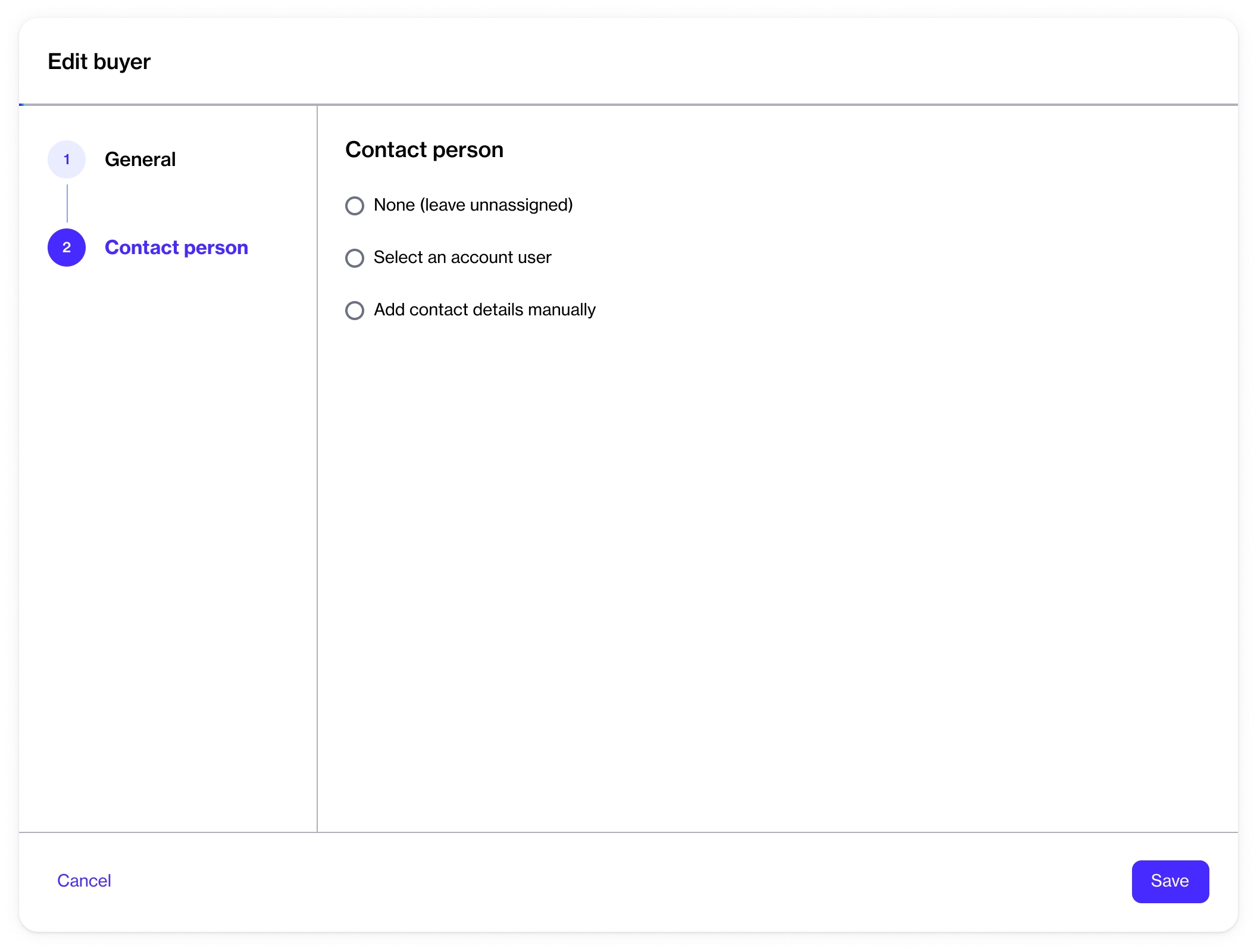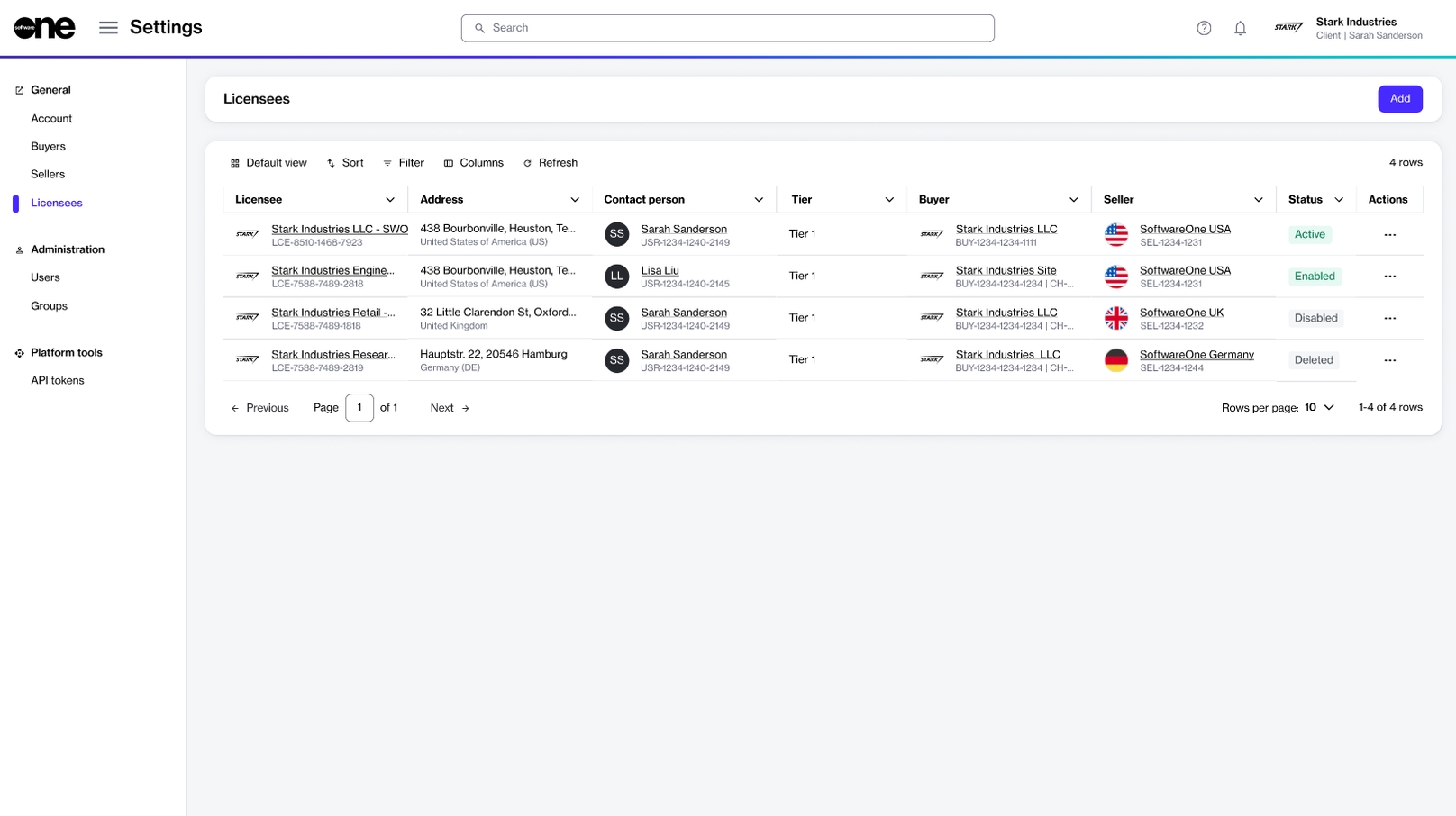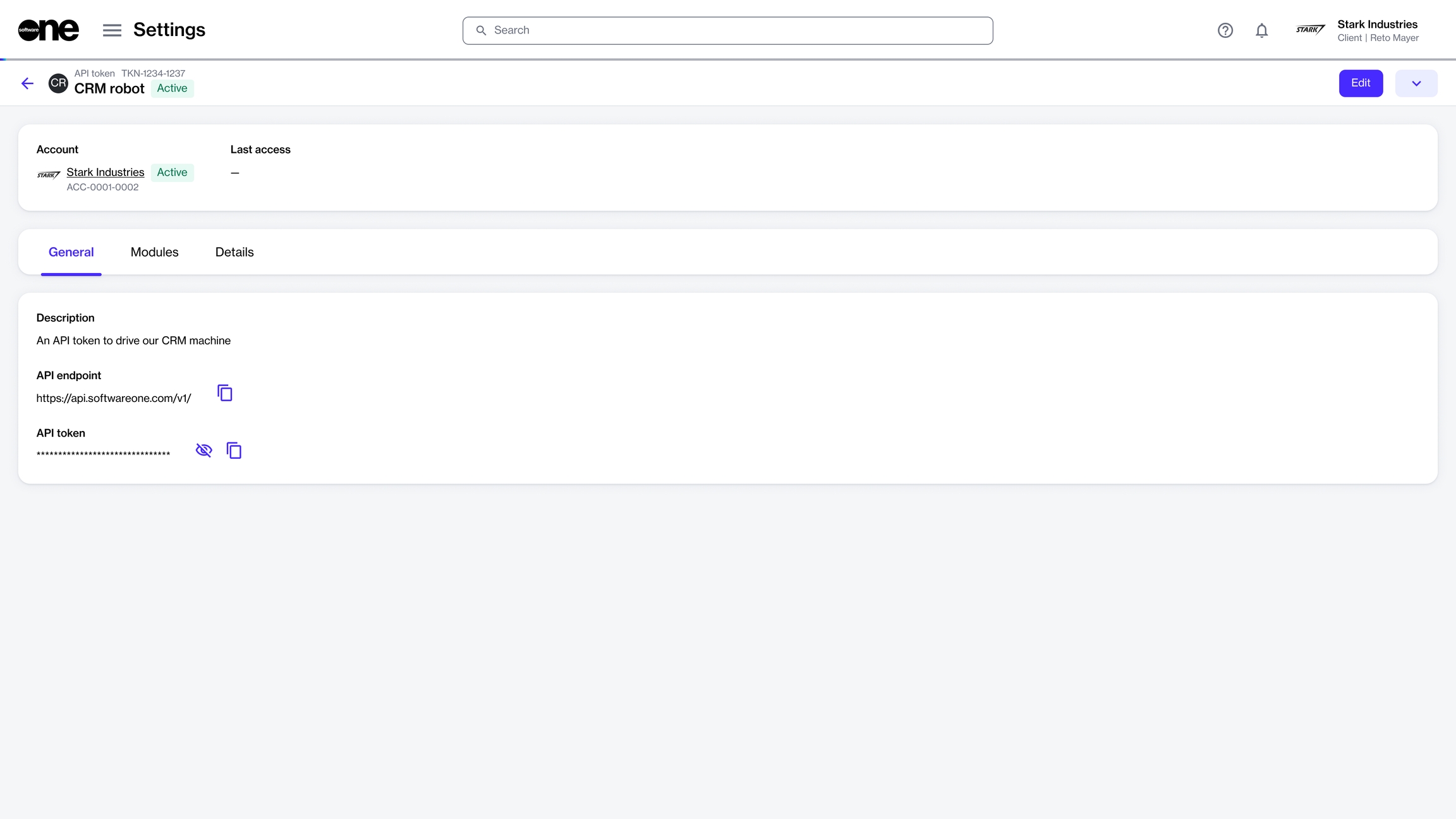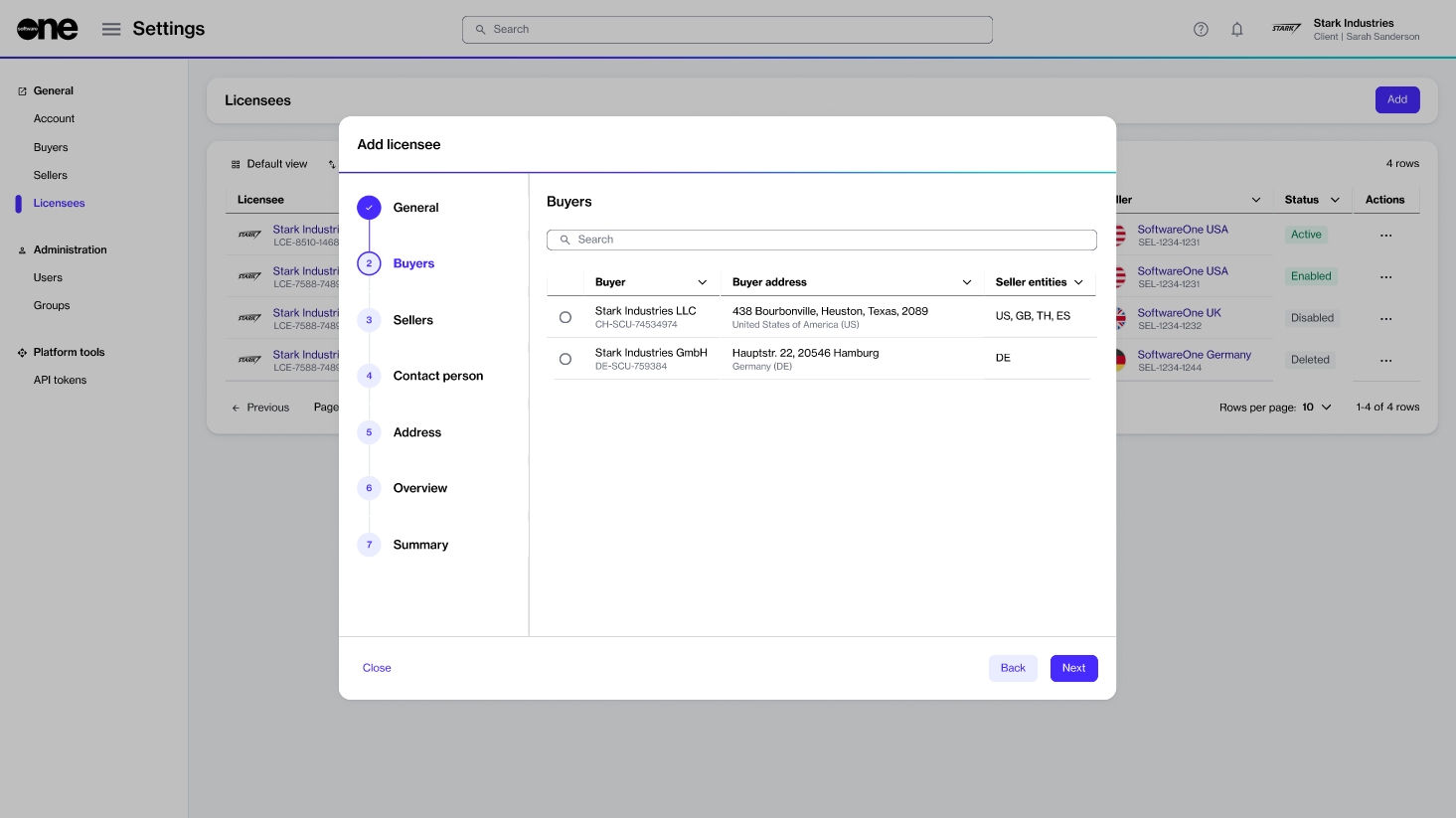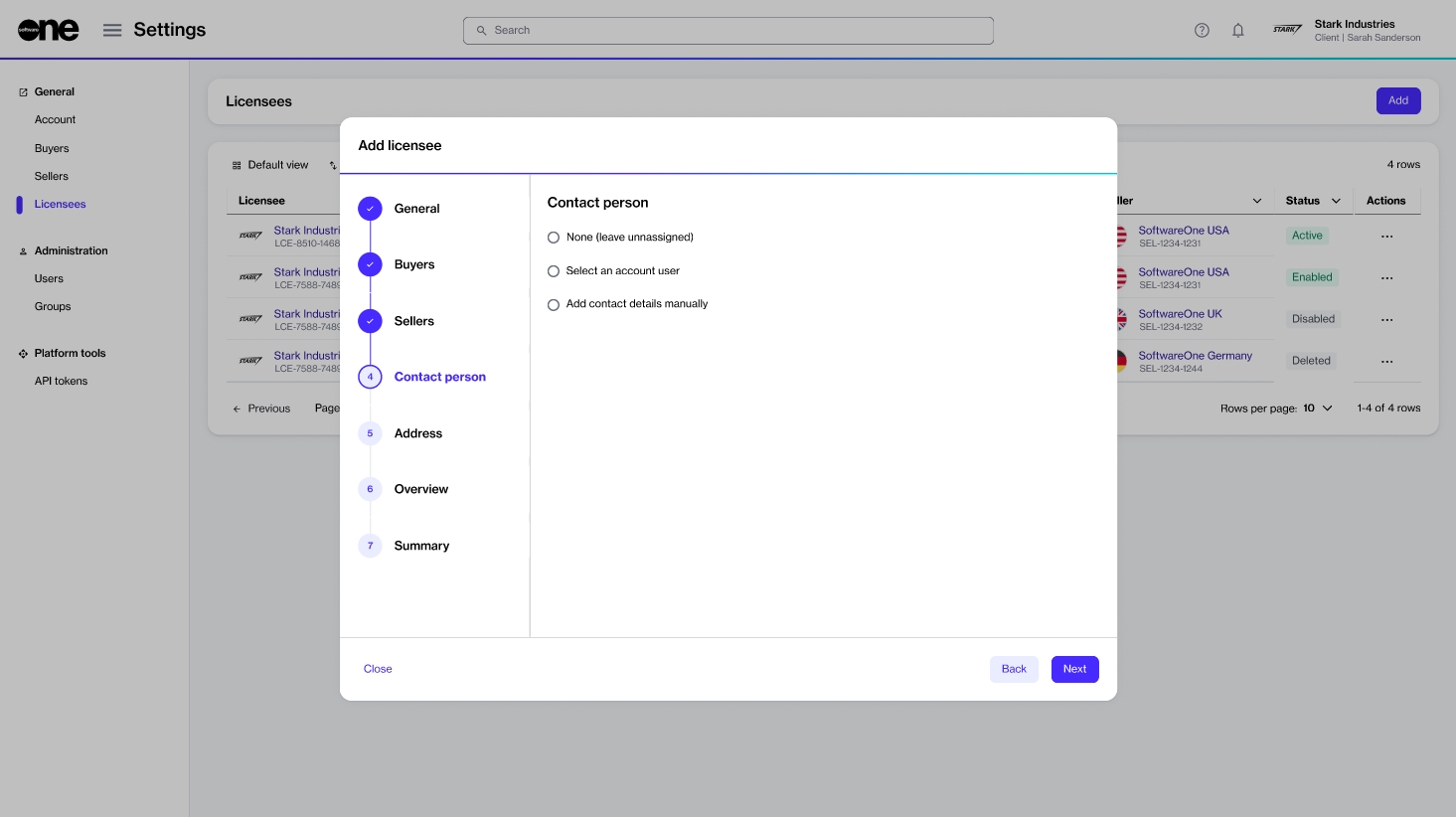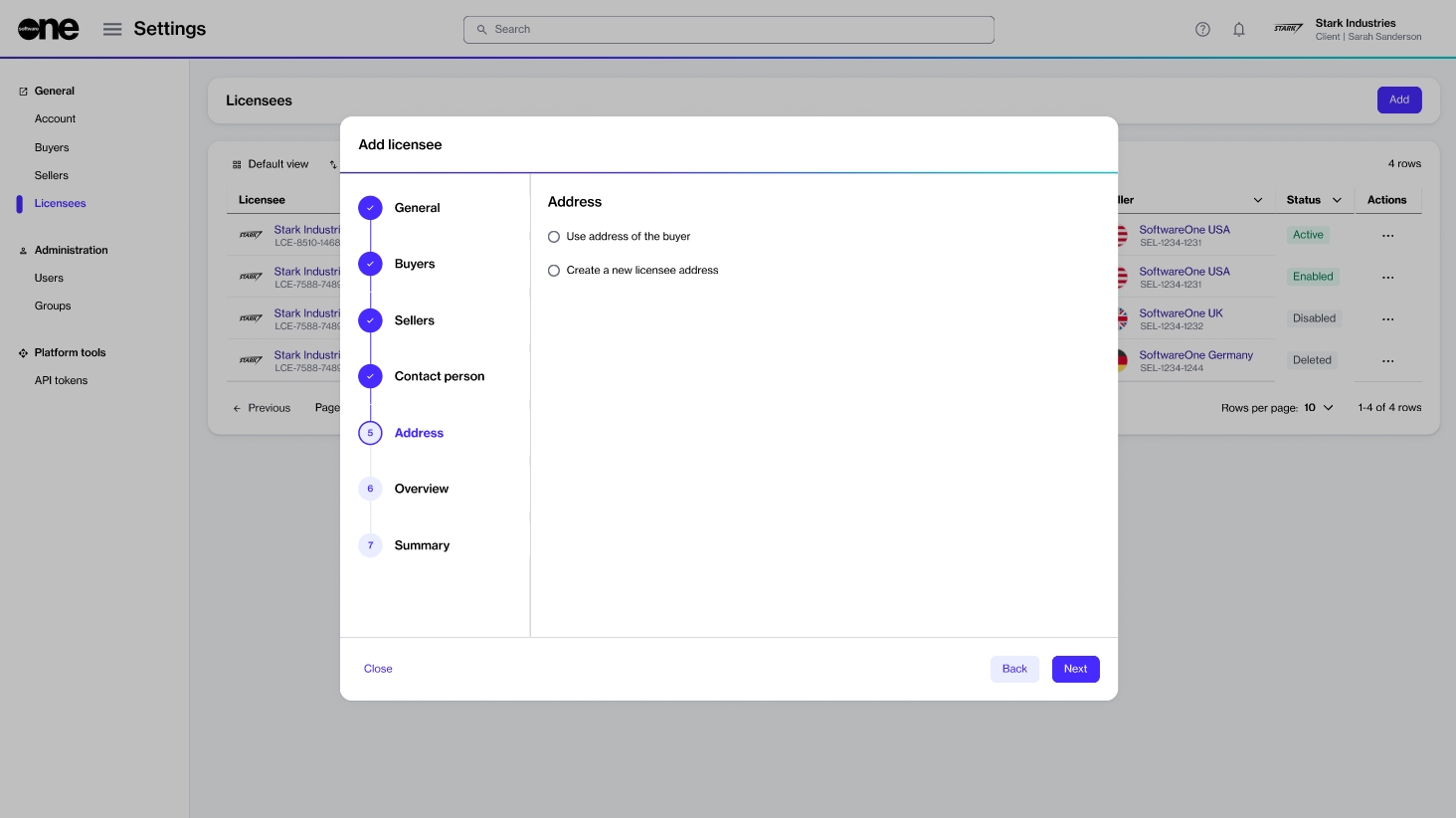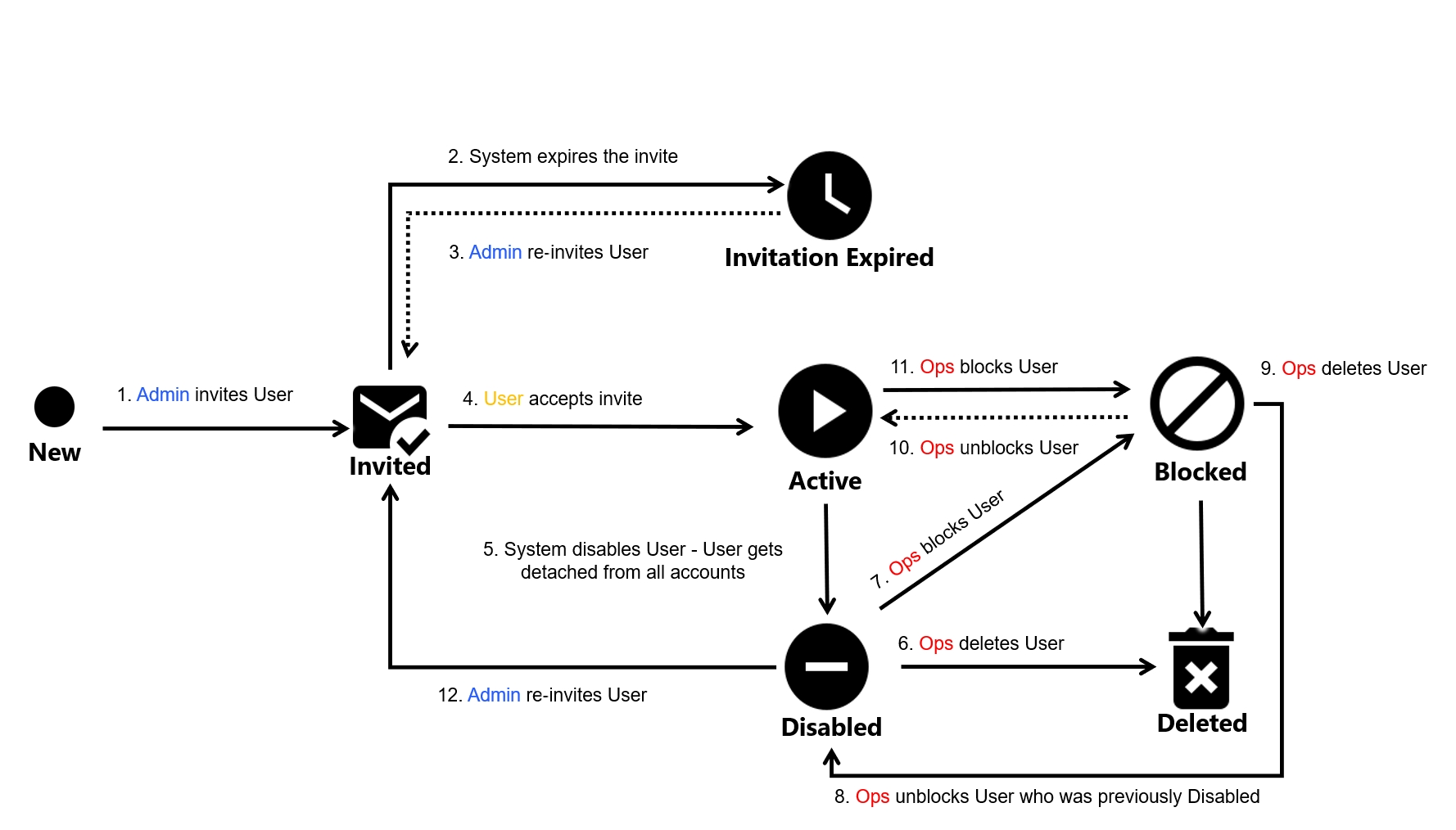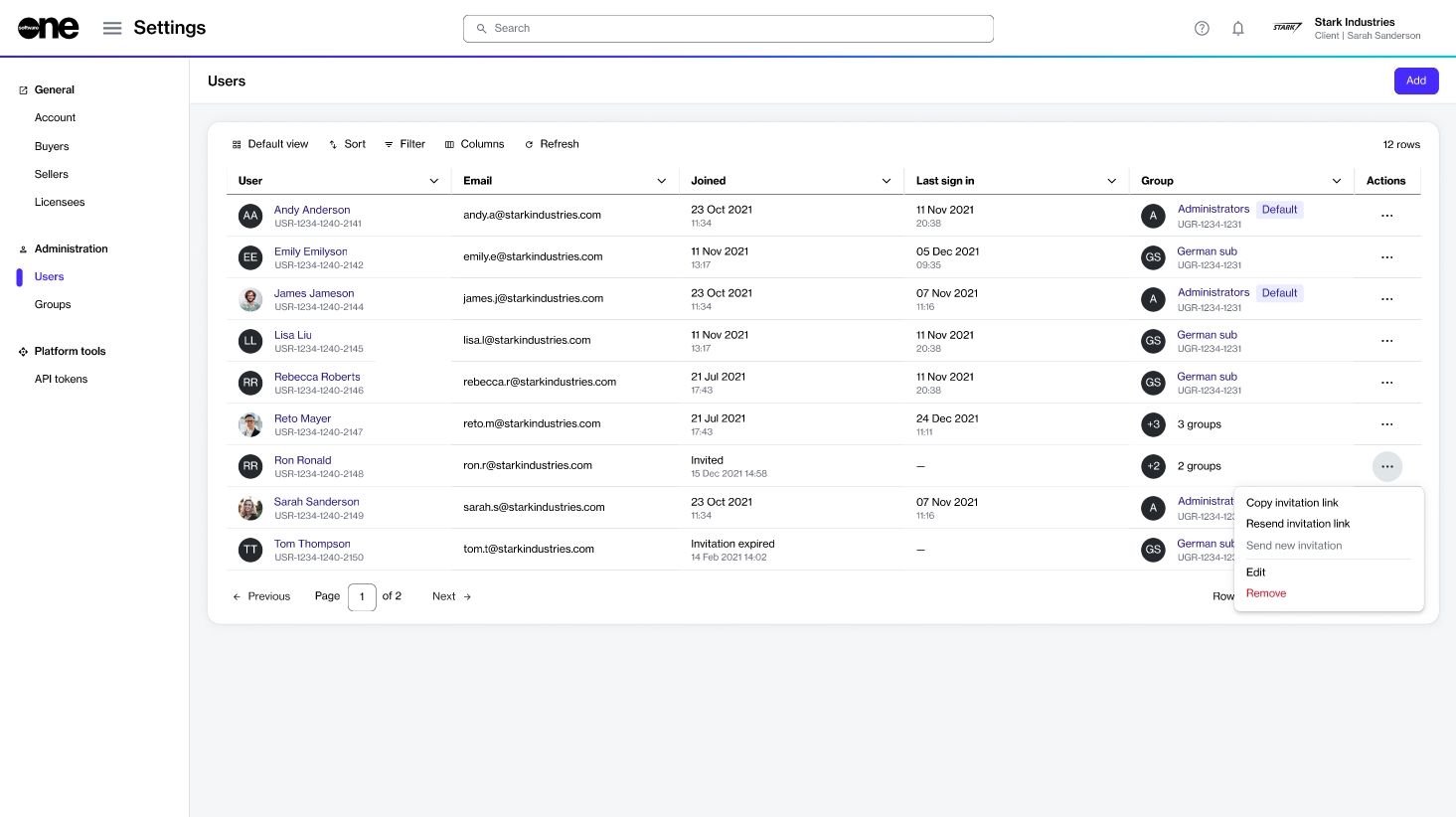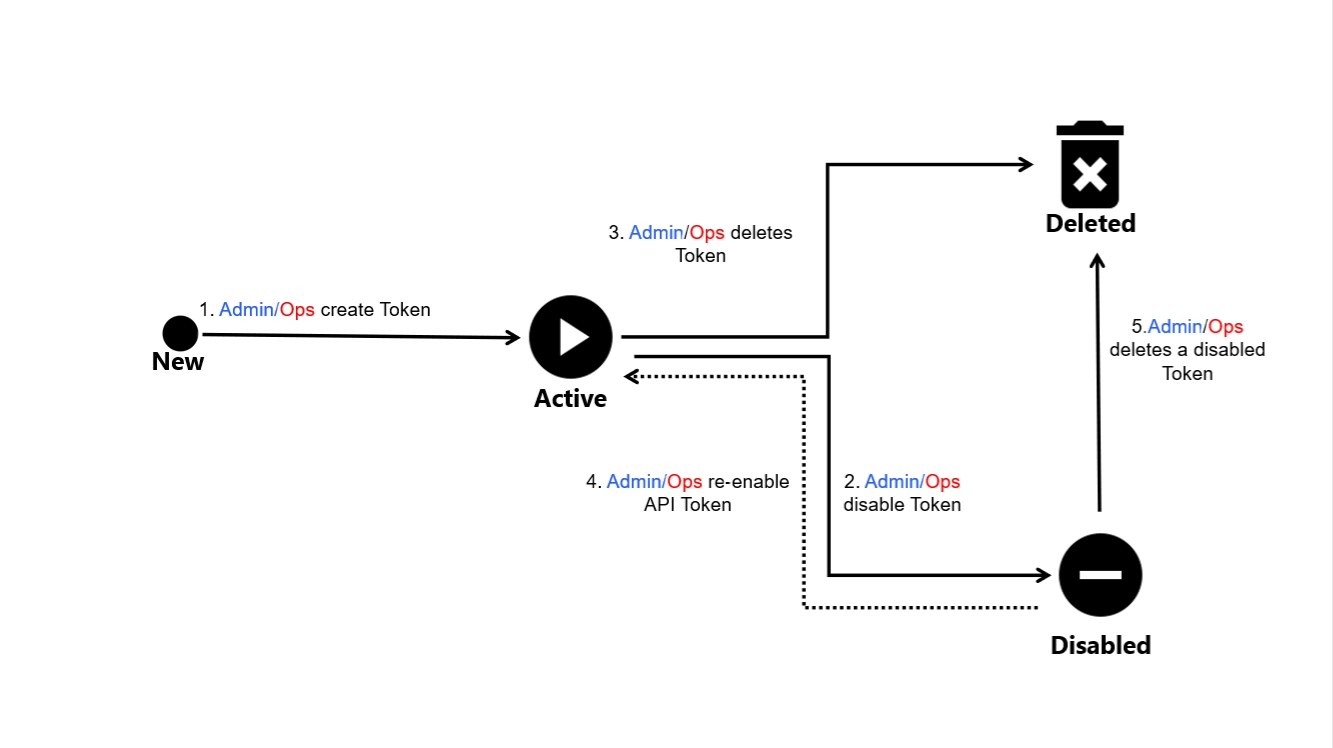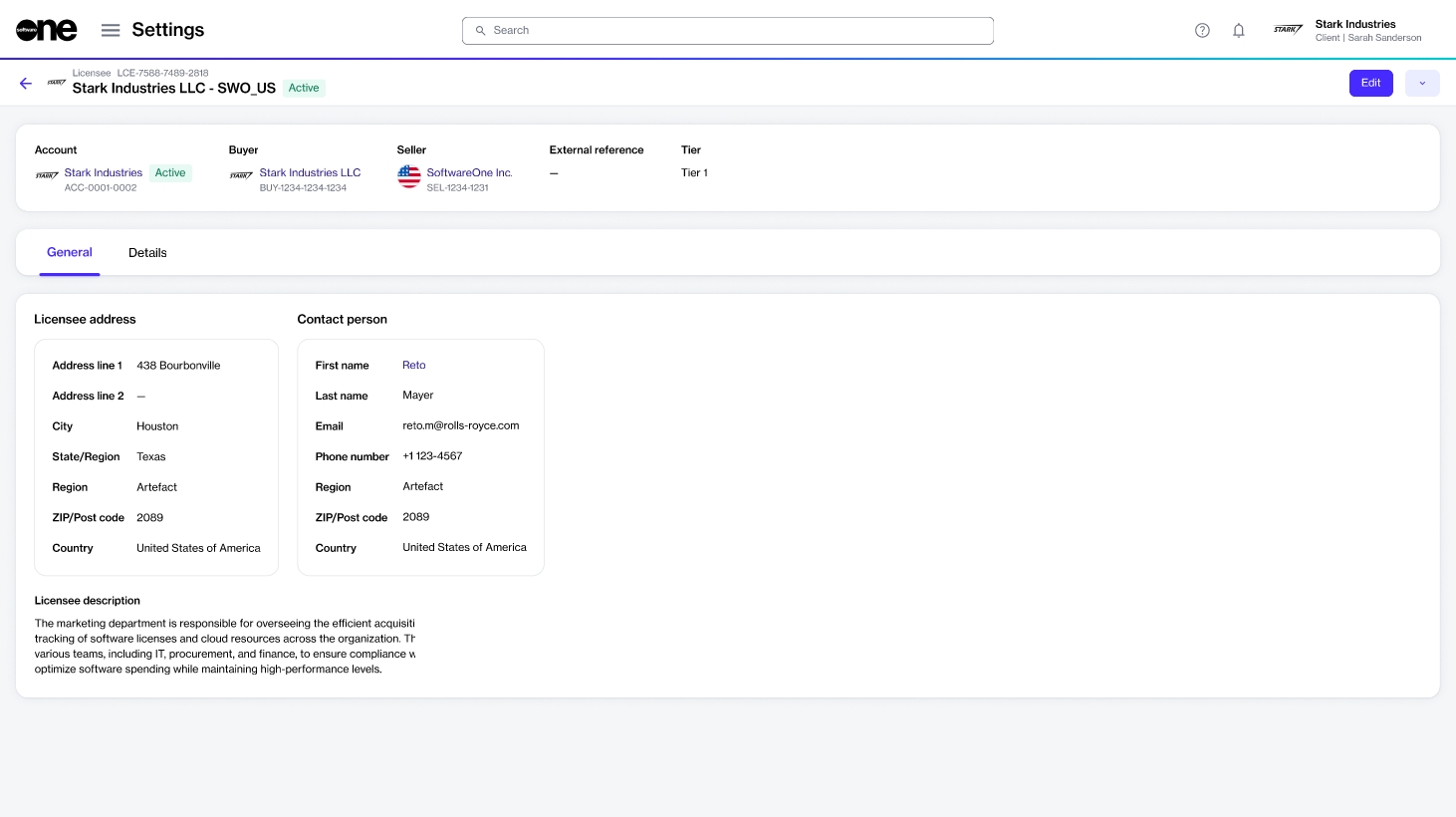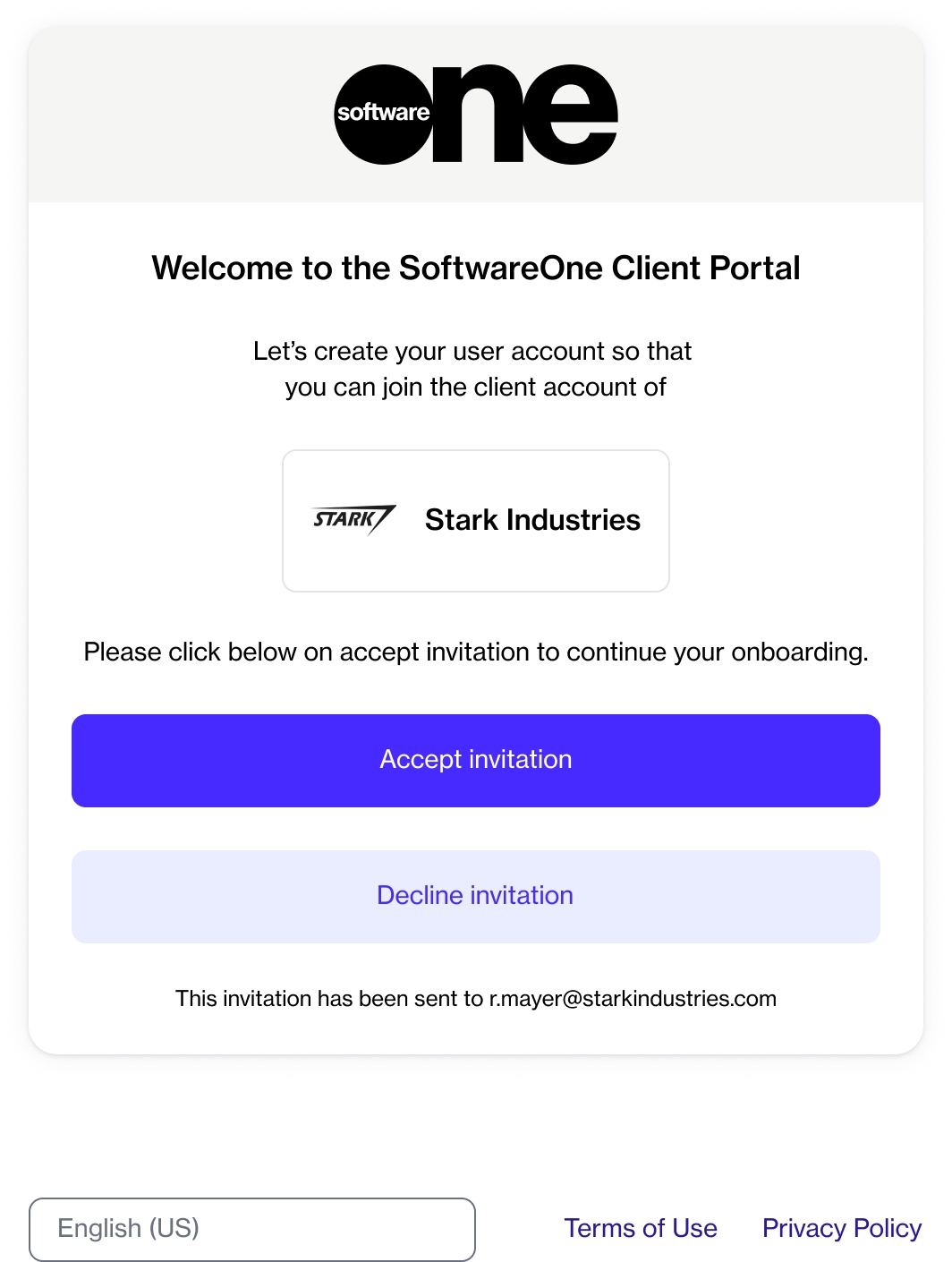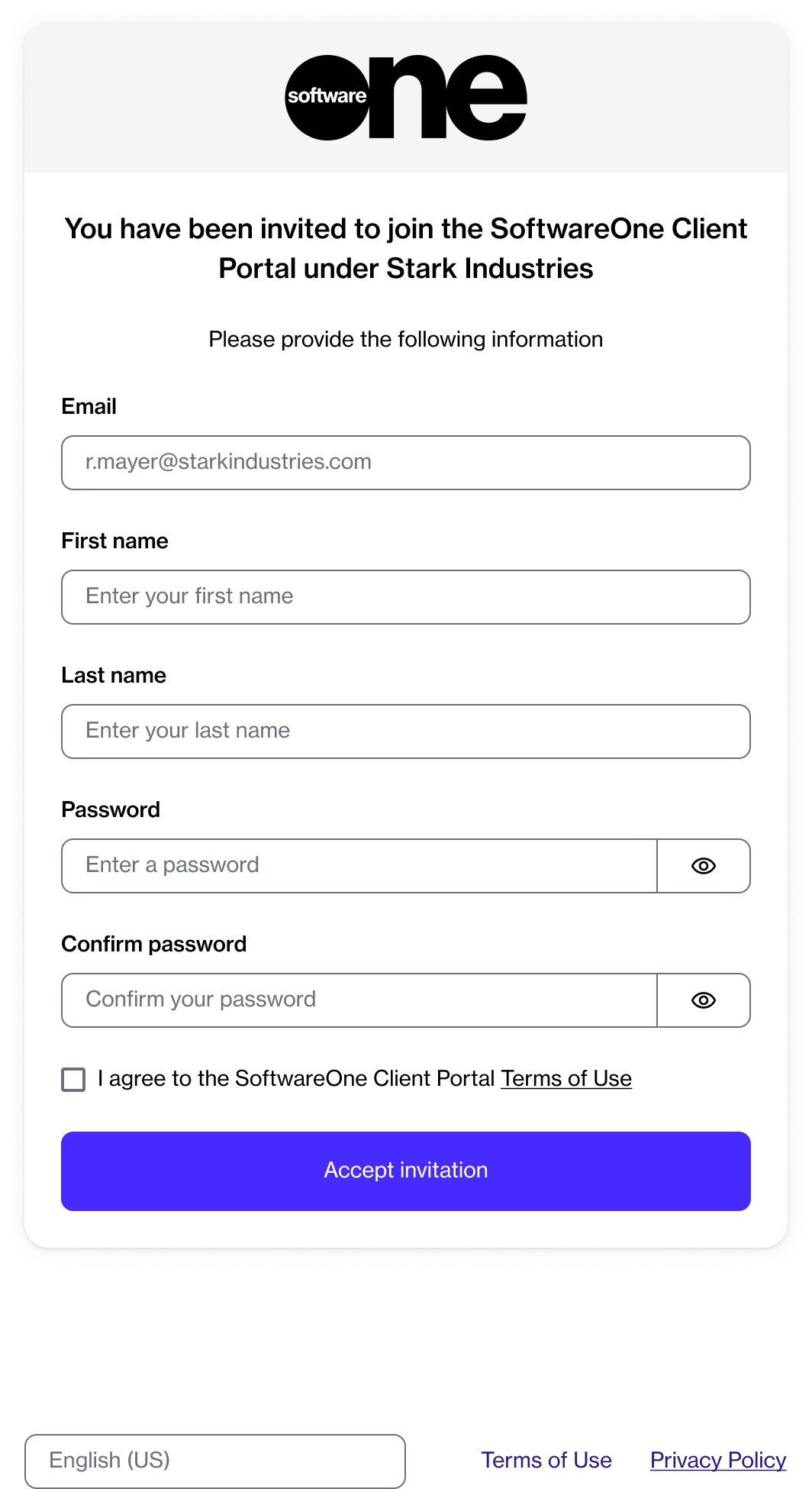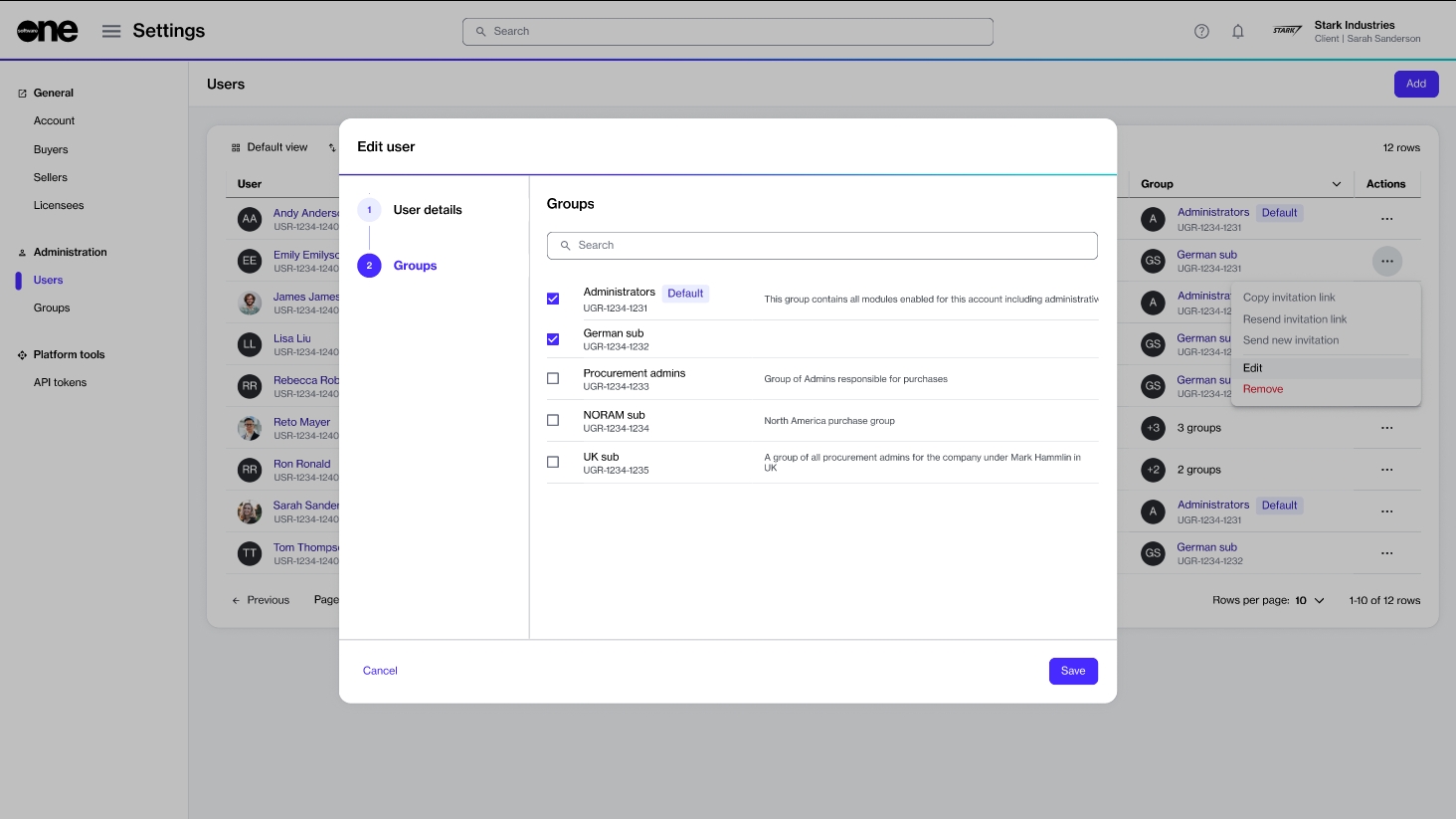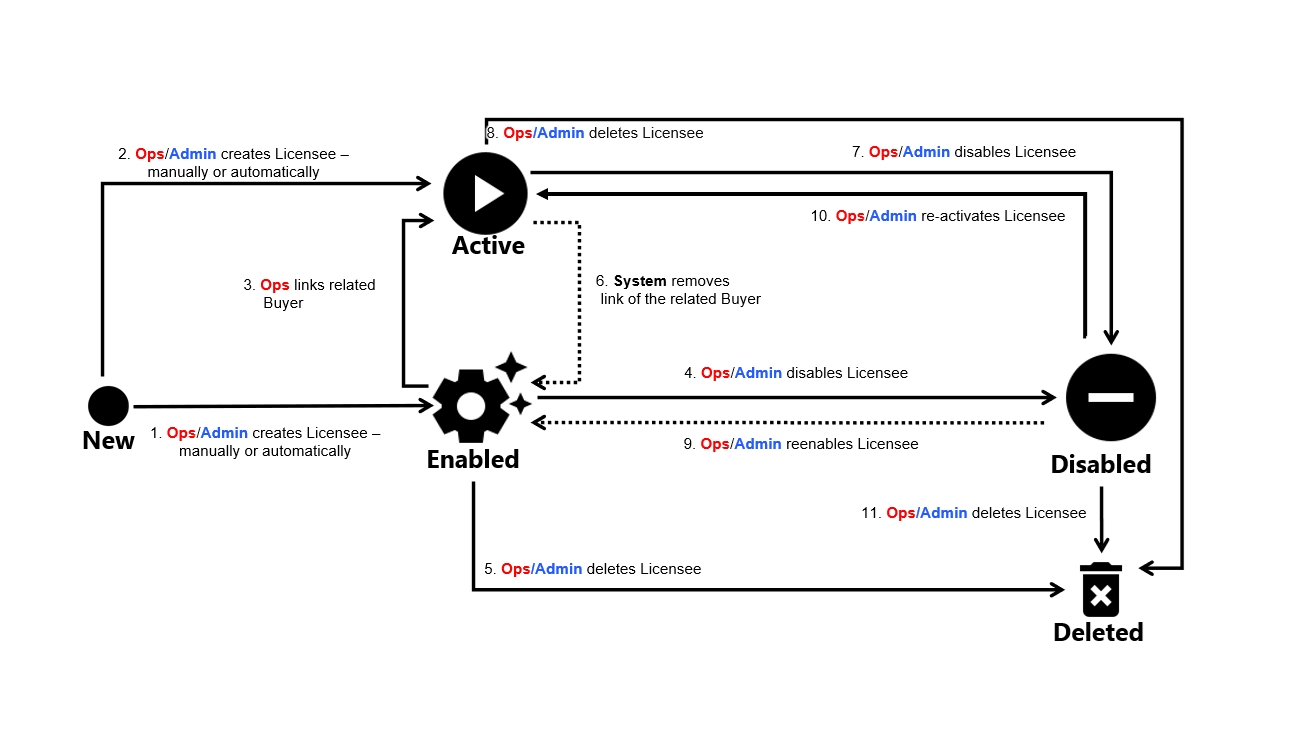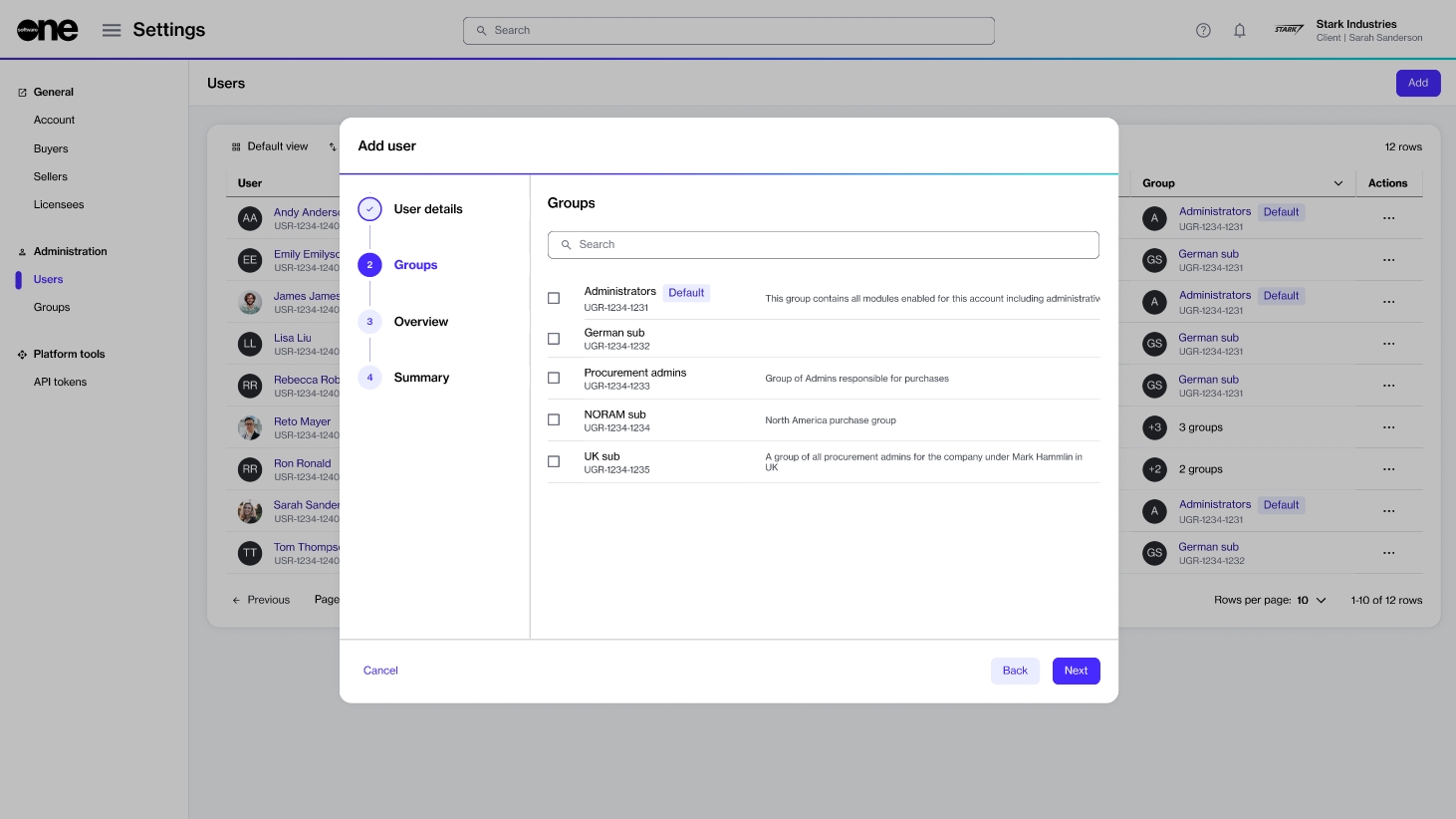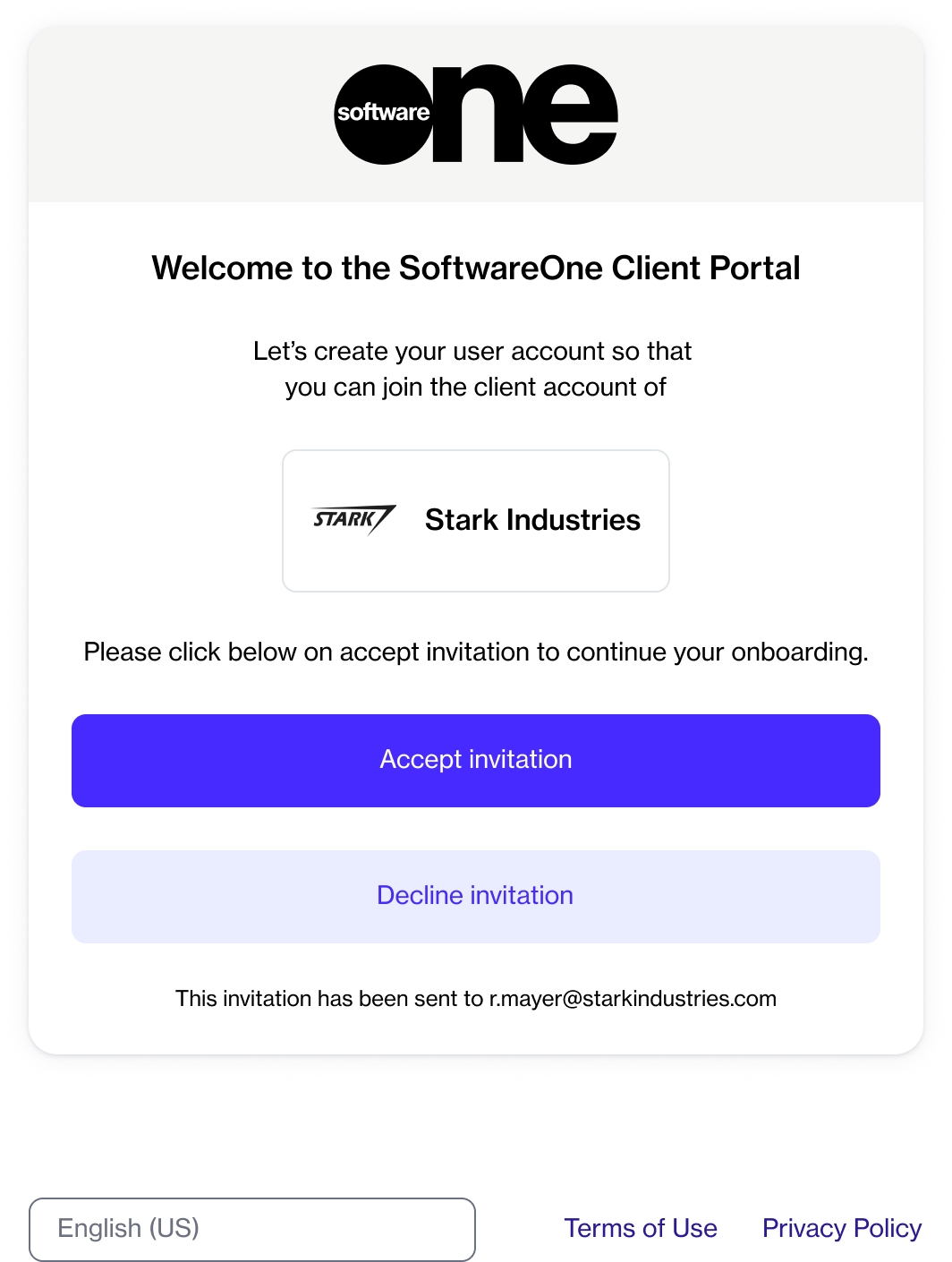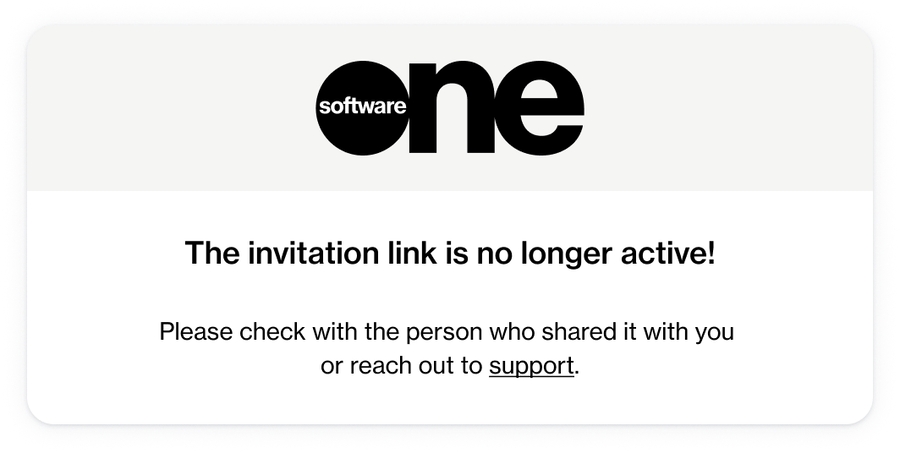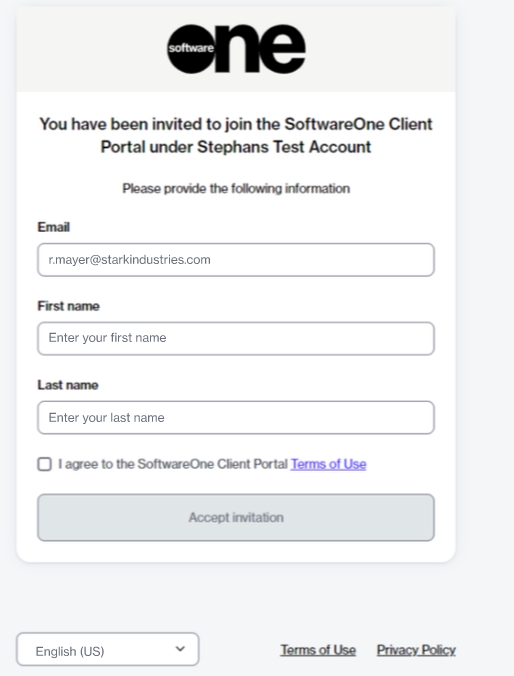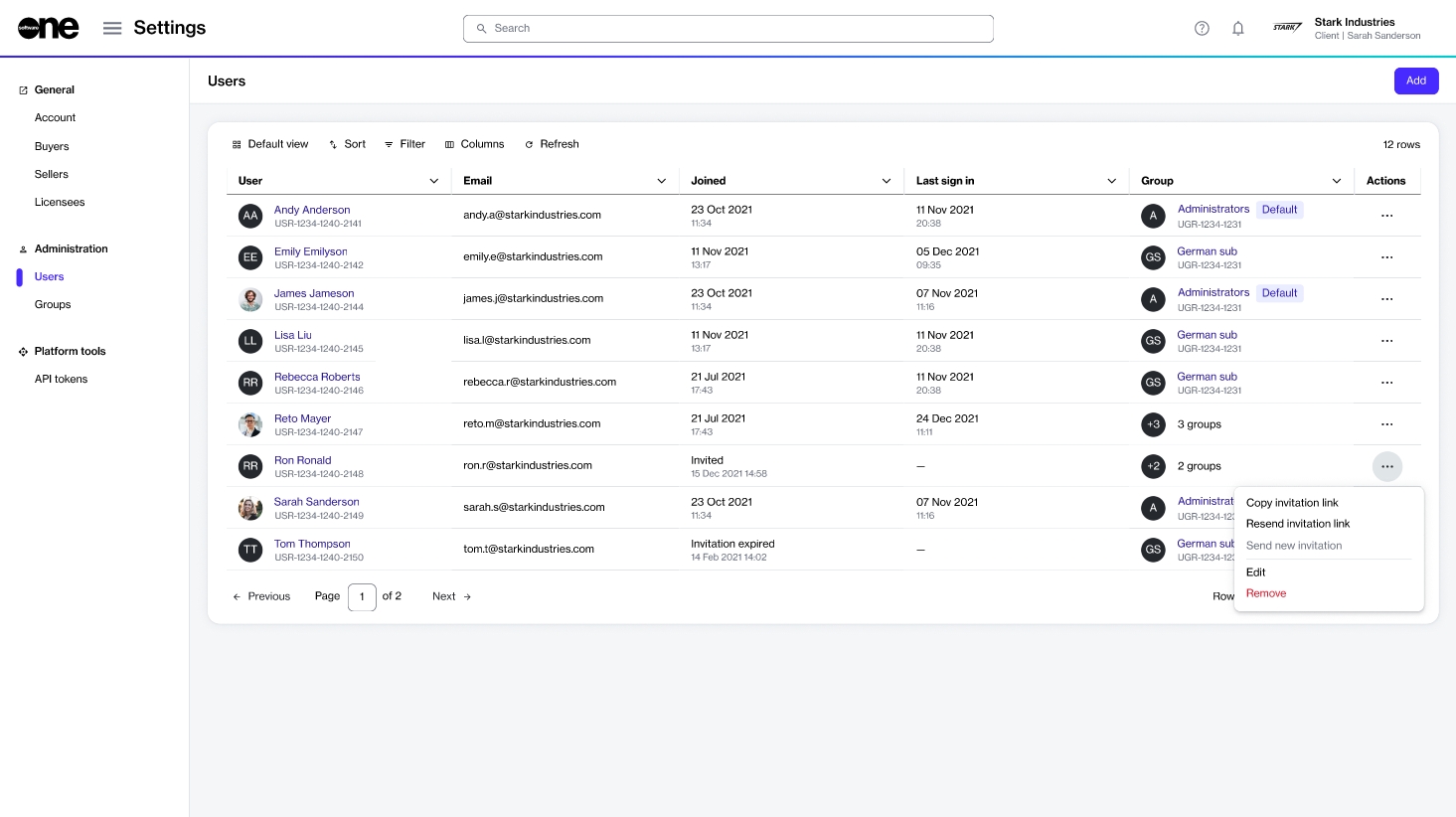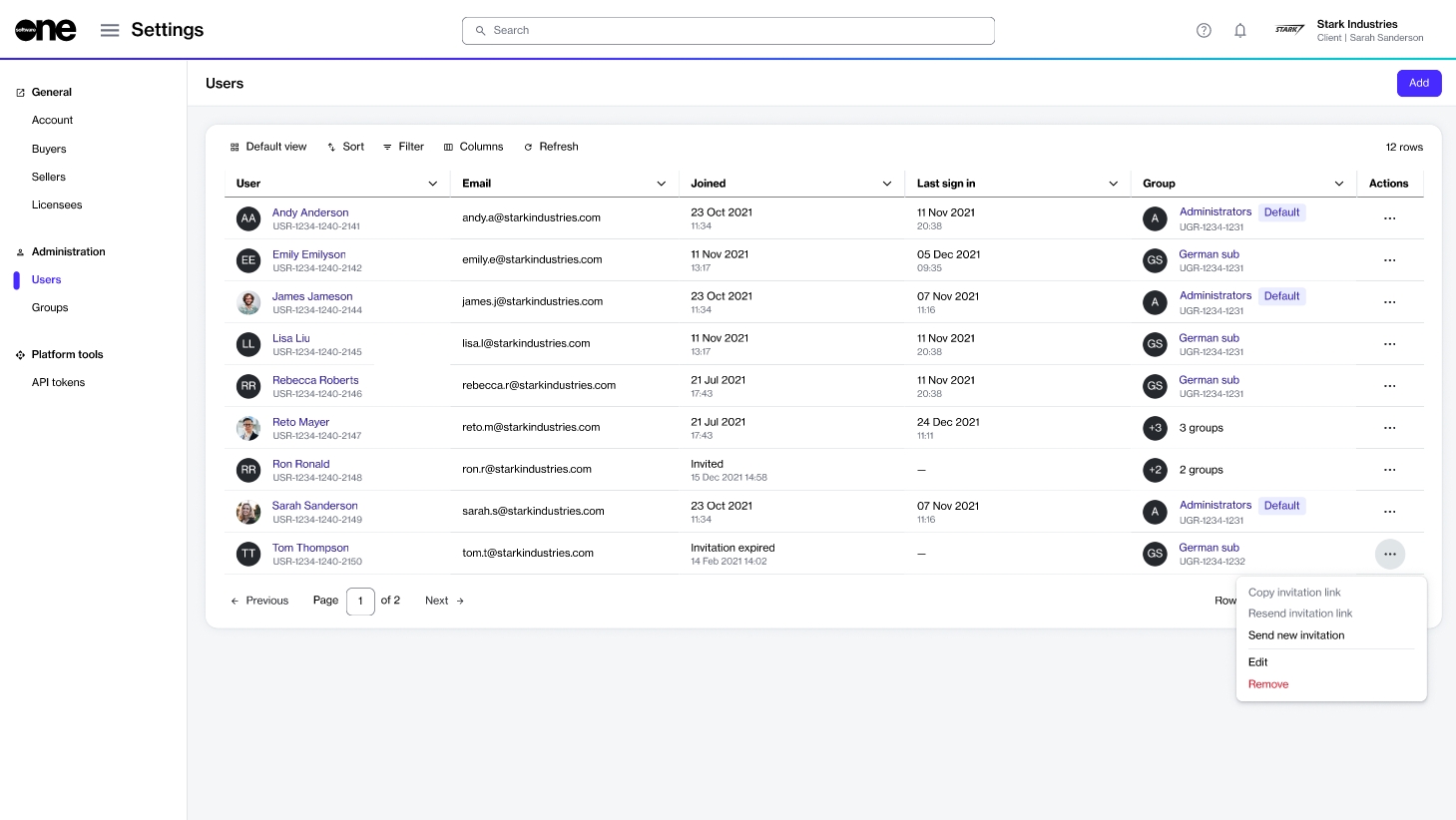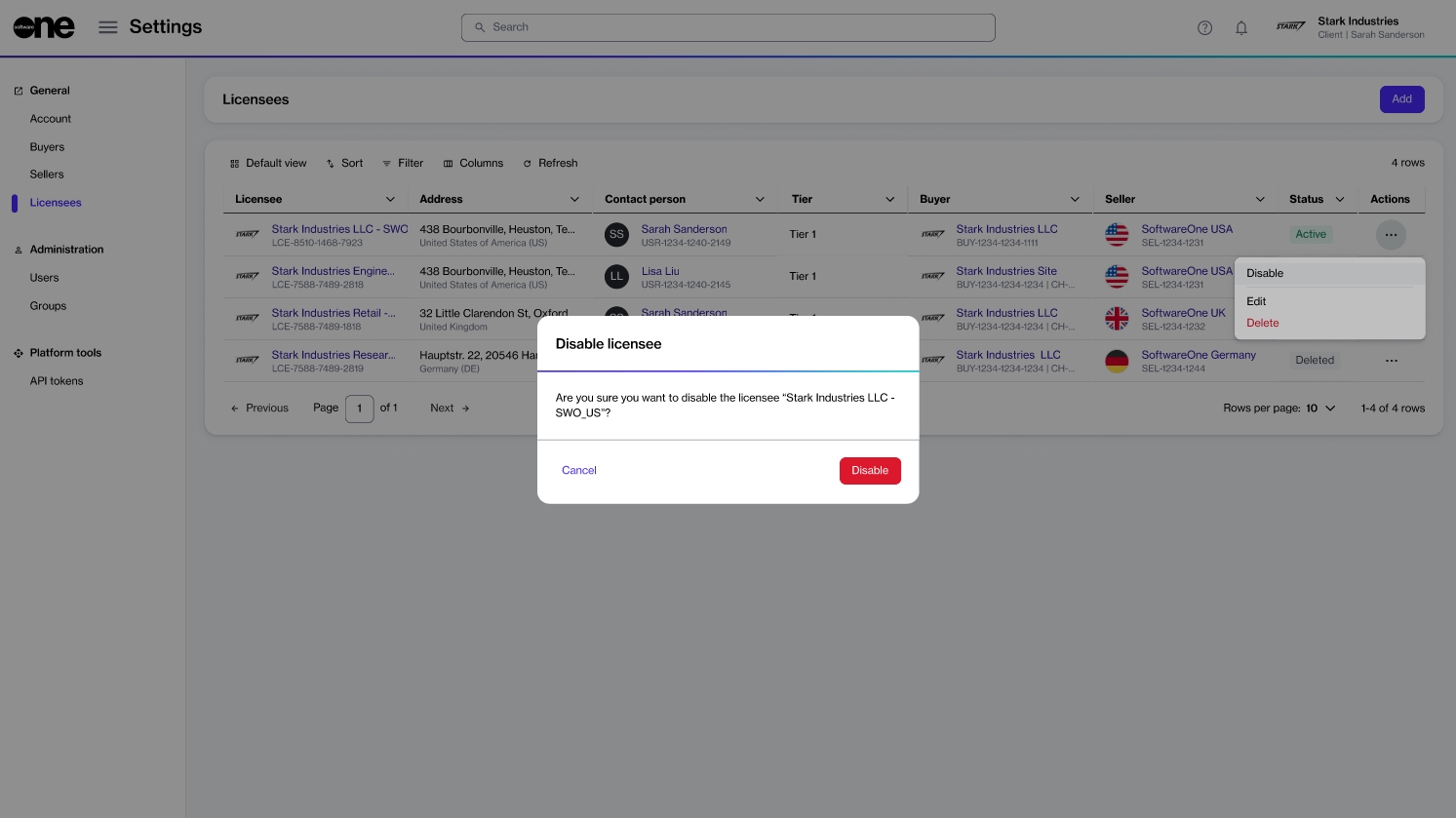Loading...
Loading...
Loading...
Loading...
Loading...
Loading...
Loading...
Loading...
Loading...
Loading...
Loading...
Loading...
Loading...
Loading...
Loading...
Loading...
Loading...
Loading...
Loading...
Loading...
Loading...
Loading...
Loading...
Loading...
Loading...
Loading...
Loading...
Loading...
Loading...
Loading...
Loading...
Loading...
Loading...
Loading...
The Settings module allows account administrators to manage various aspects of their account and adjust access permissions. The module contains features that simplify account management and access management.
Account Management refers to the administration of the account and its entities, including buyers, licensees, and sellers.
Access Management, on the other hand, focuses on securing account access by overseeing users, groups, and API tokens.
To learn more, see any of the following links:
If you need to update your account information, like the account name, company details, and address, you can make these changes through the Account page.
Follow these steps to update your details:
On the Account page (Settings > Account), click Edit in the upper right. The Edit account wizard launches.
Change the General settings as necessary:
Logo - Update the logo for your account. You can upload an image by clicking Select file or by dragging the image into the field.
Client name - Update the name of your account. The account name is displayed in the upper right and on other pages on the platform.
Change the Additional data settings as necessary:
Company website - Enter the URL for your company website.
Technical support email - Enter an email address for your technical support.
Company description - Enter a description of your company.
Change the Headquarters address settings as necessary:
Address line 1 - Enter the first line of your company address.
Address line 2 - Enter additional details or secondary address information.
City - Enter the city for your address.
State/region - Select the state or region for your address.
ZIP/postcode - Enter the zip or postal code for your address.
Country - Select the country for your address.
Click Save. A message is displayed stating that your account settings have been updated.
The Marketplace Platform lets you create API tokens through the user interface (UI).
Follow these steps to create a token:
Navigate to the API token page (Settings > API tokens).
Click Add. The Add API token page opens.
In the General section, provide the following details and then click Next.
Logo - (Optional) Add an image for your token. You can select a file to upload or drop your file to the selection area. By uploading an image, you can easily identify your token from the list of tokens.
Name - (Required) Enter a name for your token.
Description - (Optional) Add a description token description.
In the Modules section, select the modules which the token will allow access to and click Next. Note that only the modules that SoftwareOne has enabled for your account are displayed in this section.
In the Overview section, review the details and click Add. Your token is created and the token summary is displayed.
Click View details to open the details page of your newly created token. Otherwise, click Close to close the page.
In the Marketplace Platform, a buyer refers to any organization or legal entity that procures products or services from SoftwareOne. Buyers are the recipients of the invoices issued by SoftwareOne. See Key Concepts to learn more about buyers.
As a client, you can enable or disable a buyer, and update buyer details as needed through the user interface (UI). However, you cannot add new buyers. New buyers can be added by SoftwareOne only.
Account administrators can access the Buyers page by navigating to the main menu and selecting Settings > Buyers.
The Buyers page shows a list of buyers in the account. For each buyer, you can view the following information:
Buyer - Displays the buyer's name and their unique identifier on the Marketplace platform.
Tax number - Displays the tax identifier for the buyer, if available.
Address - Displays the buyer's address.
Contact Person - Displays the contact person for the buyer. You can assign a contact person by editing the buyer. For instructions, see Edit Buyers.
Seller - Displays the name of the SoftwareOne legal entity from which the buyer can procure.
Licensee - Displays the licensee mapped to the buyer.
Status - Displays the buyer's status in the system. Possible values include:
Enabled - The buyer has been created in the system but it hasn't been activated yet by SoftwareOne.
Active - The buyer is active and you can select it from your list of buyers when buying products.
Disabled - The buyer has been disabled and can no longer be selected when buying products.
Mismatch - The buyer’s data is not in sync with the data in our backend system. This discrepancy can occur due to various reasons. Contact support for assistance.
Actions - Displays options that allow you to edit a buyer or enable or disable a buyer. These options are visible only if you have access to the Account Management module.
The details page of a buyer provides all information related to the buyer. You can open the details page by clicking the buyer on the Buyers page.
When you open the details page, it shows the data associated with the buyer, like the name, marketplace ID, status, and so on.
The page also contains the following tabs that display corresponding information:
General - Displays the buyer's address and the contact person details.
Sellers - Displays the SoftwareOne entities linked to the buyer. Clicking the seller's name opens up the details page for the seller.
Licensees - Displays all licensees associated with the buyer.
Details - Displays reference information, such as the external IDs as well as event summary.
Audit trail - Displays an audit trail of all changes. For each audit record, you can view the log details and summary. To learn more, see Audit Trail.
An account enables a company or organization to sign in to the Marketplace Platform and access various platform modules and features. Different types of accounts exist on the Marketplace Platform. Learn more about accounts in Key Concepts.
If you are an account administrator, you can access the Account page by navigating to the main menu and selecting Settings > Account.
On this page, you can view and manage account information, including your general account settings and address information.
The Account page also contains the following tabs:
General - Displays the additional data for your account, such as your company website and description, support email address, and headquarters address.
Modules - Displays the modules that SoftwareOne has enabled for your account.
Details - Displays the date and time your account was created on the platform. It also shows the last updated date and time if any changes were made to your account, such as address changes.
Audit trail - Displays an audit trail of all changes and events within your account. For each audit record, you can view the log details and summary. To learn more, see Audit Trail.
If you want to update the general information associated with your account, use the Edit option in the upper right. For instructions, see Update Account Information.
You can update an API token’s description and change the access scope using the platform's user interface (UI).
Follow these steps to update your token:
On the API token page (Settings > API tokens), find the token you want to update.
Do one of the following:
Click the actions icon (•••) and select Edit.
Click the token. When the details page opens, click Edit in the upper right. The Edit API token page opens.
Change the General settings as necessary:
Name - Update the token's name.
Description - Update the token description.
Update the access scope for the Modules as necessary. Use the checkboxes to select or clear modules as required.
Click Save. A confirmation message is displayed stating that your token has been updated.
After the buyers have been linked to your account by SoftwareOne, you can manage them through the platform and edit buyer details as needed. You can update the contact person assigned to the buyer and the buyer's logo in the system.
Follow these steps to update the buyer details:
Navigate to the Buyers page (Settings > Buyer).
Click the buyer's name. When the details page of your selected buyer opens, click Edit in the upper right. The Edit buyer page opens.
In the General section, add or update the buyer's logo. You can upload an image by clicking Select file or by dragging the image into the field.
In the Contact Person section, make the following changes as necessary:
None (leave unassigned) - Select to leave the contact person unassigned.
Select an account user - Select to choose an existing user. When you select this option, all active users that exist in your account are displayed. If your account contains several users, use the Search option to find the user easily.
Add contact details manually - Select to add the individual's details manually. You'll need to provide the person's first name, last name, email address, and the optional contact information.
Click Save. A confirmation message is displayed stating that the buyer details have been updated.
If you no longer wish to use a buyer, you can disable them temporarily through the platform and re-enable them when required.
When you disable a buyer, the licensees associated with that buyer also become unavailable. It means you will no longer be able to select those licensees when creating agreements or making purchases.
Follow these steps to enable or disable a buyer:
On the Buyers page (Settings > Buyers), locate the buyer you want to manage.
Click the actions icon (•••) for the buyer and select Enable or Disable. Note that only one of these options is shown depending on the current state of the buyer. For example, the Enable option is shown only if the buyer has been disabled.
Confirm that you want to enable or disable the buyer.
A message is displayed stating that the buyer has been updated. You can view the updated buyer status on the Buyers page.
You can easily copy an API token if you need to use it in your application.
Follow these steps to copy a token:
Navigate to the API token page (Settings > API tokens).
Find the token to copy and click the token name. The details page of your selected token opens.
From the General tab, do the following as needed:
To copy the endpoint, click the copy icon for the API endpoint.
To copy the token value, click the copy icon for the API token.
To show the token value, click the eye icon. To hide the value, click the icon again.
A confirmation message is displayed when the values are copied successfully.
If you no longer need a token, you can delete it through the platform's interface. Before deleting a token, note the following points:
A deleted token cannot be reinstated or reused.
Deleting a token removes it from the account, which means that the token is no longer displayed on the API Tokens page.
Follow these steps to delete an API token:
On the API token page (Settings > API tokens), find the token you want to delete.
Click the actions icon (•••) and select Delete.
Alternatively, click the token name. When the details page of your selected token opens, click the down arrow next to Edit and select Delete.
In Delete API token, confirm that you want to delete the token.
A message is displayed stating that the API token has been deleted successfully.
The Audit trail feature allows you to monitor and track every action taken on an object within your account.
You can use this feature to see who made what changes, when they made them, and in what context. It provides a detailed record of various types of actions such as data modifications, status updates, and events generated by the platform.
Each audit trail record includes timestamps, a summary of the event, object-specific details, and the actors involved.
If you are an account administrator, you can access the audit trail by navigating to the main menu and selecting Settings > Audit trail. This will allow you to view all records available at the account level.
An audit trail also exists at the object level in our platform. If you want to view records for your orders, subscriptions, and more, you can see the log history within the Audit trail tab on the details page of your selected object. The following example shows the audit trail on the order details page:
At the account level, the Audit trail page shows all records that have been generated for your account:
For each record, you can view the following details:
Date - Shows the date and time when the action was performed.
Object - Displays the ID of the object that was created or updated. Clicking the object ID displays the object's details page.
Object type - Shows the object associated with the event.
Actor - Displays the ID of the actor who performed the action. If the action was performed by the platform, a token ID will be displayed instead.
Tech details - Shows technical information for the record, including details like IP address, operating system, and more.
Summary - Displays a short description of the event.
Details - Displays a full description of the event.
You can disable an API token temporarily and enable it again when required easily through the platform. Before disabling a token, note the following points:
Disabling does not but makes it inactive until it is enabled again. When a token is disabled, any attempts to access the endpoint return an error.
The Enable option is shown only if you've disabled the token previously.
Follow these steps to manage the token:
On the API tokens page, find the token you want to enable or disable.
Click the actions icon (•••) and select Enable or Disable. The following image shows the Disable option:
Alternatively, click the token name. When the details page of your selected token opens, click the down arrow and select Enable or Disable.
Confirm that you want to change the status of your token.
A message is displayed stating that the operation is successful. You can view the updated status of your token in the Status column on the API token page.
Actions - Includes the View details option. Selecting this option displays the Record details page, which includes a JSON representation of the record and allows you to copy the event summary, description, and JSON data using the Copy option.
A licensee represents a specific person or a department within your account that receives the license to use the product.
Licensees are linked to the buyers and sellers in your account. There can be multiple licensees in an account, however, a licensee can only be linked to one buyer and one seller. You can learn about licensees in .
Initially, the licensees are created by SoftwareOne and mapped to the different buyers and sellers within your account. However, you can easily manage the licensees and create new ones through the interface.
Account administrators can access the Licensees page by navigating to the main menu and selecting Settings > Licensees.
The page displays all licensees that exist in your account. For each licensee, you can view the following details:
Licensee - Displays the name and unique identifier of the licensee. The name can be the name of a user, a company name, or a department name.
Address - Displays the address of the licensee.
Contact person - Displays the contact person associated with the licensee.
Buyer - Displays the buyer that has been mapped to the licensee.
Seller - Displays the SoftwareOne entity that is responsible for facilitating the procurement of products and licenses.
Actions - Displays options that allow you to manage your licensees. Depending on your permissions, you can update licensee information, and enable or disable a licensee.
The details page of a licensee displays the additional information about the licensee. You can open the details page by clicking the licensee name on the Licensees page.
The details page shows the licensee's name, marketplace ID, and status. It also shows the associated buyer and seller entities, and contains the following tabs:
General - Displays the licensee's mailing address and contact person details.
Details - Displays date and time information for the licensee, for example, the date and time when the licensee was created in the system and so on.
Status - Displays the licensee's status in the platform. To learn about the possible states, see .
.
.
Audit trail - Displays an audit trail of all changes made in the scope of the licensee. For each audit record, you can view the log details and summary. To learn more, see .
If you need to modify licensee details, like their name, description, address, you can update the information through the interface.
Note that the platform only supports updating basic details. You can't update the buyer or seller entities that are mapped to a licensee.
Follow these steps to edit a licensee's general details:
On the Licensees page (Settings > Licensees), find the required licensee.
Click the actions icon (•••) for the licensee and select Edit. Alternatively, click the name of the licensee. When the details page of your selected licensee opens, click Edit in the upper right. The Edit licensee page opens.
In General, update the following details as necessary:
Logo - Upload the licensee's logo in the JPG or PNG format. The maximum file size is 5MB. You can upload an image by clicking Select file or by dragging the image into the field.
Licensee name - Update the licensee name.
External reference - Add or update the reference number associated with the licensee. You can also remove the number, if provided during licensee creation.
Licensee description - Add or update the licensee description.
In Contact person, update the contact person for the licensee.
In Address information, adjust the address as necessary. You can update the existing address or choose the option to use the same address as that of the buyer.
Click Save. A message is displayed stating that the licensee information has been updated.
Licensees in the Marketplace Platform can be in multiple states (also known as status).
The following diagram shows the possible states and the transition between these states:
Active
The licensee is active and can be used when buying products in the platform.
Enabled
The licensee has been set up in the system, but can't be used for transactions.
Disabled
The licensee has been disabled and can no longer be used.
Deleted
The licensee has been deleted.
You can create new licensees and map those licensees to the buyers and sellers in your account. Licensees are used when establishing agreements and ordering software products.
Before creating a licensee, ensure that your account contains buyers and sellers. Also make sure that you have the first and last name, and email address of the licensee to add.
Follow these steps to create a new licensee:
On the Licensees page (Settings > Licensee), click Add. The Add licensee page opens.
Do the following and then click Next:
Logo - (Optional) Add a logo representing the licensee. You can upload an image by clicking Select file or by dragging the image into the field.
Licensee name - (Required) Provide the licensee's name. This can be your company name, department name, or username.
External reference - (Optional) Provide a reference number or identifier for the licensee.
Licensee description - (Optional) Add a description for the licensee.
Choose the buyer for your transactions. Note that you can link a licensee to one buyer only. If you have several buyers, use the Search bar to find the required buyer. Click Next.
Select the SoftwareOne entity that will facilitate transactions. Click Next.
Choose a contact person for this licensee and click Next. The following options are available:
None (leave unassigned) - Select to leave the contact person unassigned.
Select an account user - Select to choose an existing user. When you select this option, all active users that exist in your account are displayed. If your account contains several users, use the Search option to find the user easily.
Add contact details manually - Select to add the contact person's details manually. You'll need to provide the person's first name, last name, email address, and the optional contact information.
Choose the licensee's address. You can use the same address as that of the buyer, or provide a new address by selecting Create a new licensee address.
Review the details and click Add to add the new licensee. The new licensee is created and the Summary section displays the details of your newly created licensee.
Click View details to open the details page of the licensee. Otherwise, click Close to close the page and return to the Licensees page.
The Marketplace Platform uses API tokens to authenticate requests to the REST API . Your API token must be included in the "Authorization" HTTP header with the "Bearer" prefix for authentication. For example, the following request could be used to retrieve a list of Buyers:
Your API keys have permissions assigned to them, so keep them secure. Do not share your secret API keys in public areas like GitHub or client-side code. All API requests must be made over HTTPS. Calls made over plain HTTP will fail. API requests without authentication will also fail.
Account administrators can access the API tokens page by navigating to the main menu and selecting Settings > API tokens.
The page displays all tokens that have been created in your account. For each token, you can view the following information:
API token - Displays the name of the token and its marketplace identifier.
Modules - Displays the total number of modules that the token has access to. In cases where only one module is within the scope, the module name is displayed.
Created by - Displays the name and marketplace ID of the person who created the token.
Date created - Displays the date and time when the token was created.
Last access - Displays the date and time when the token was last used.
Status - Displays the current status of the token. For more information on the status, see Token States.
Actions - Displays options that allow you to manage the API token. Depending on the status of the token, you can enable or disable a token, delete the token permanently, or edit token details.
The details page of a token displays additional information about the token. You can open the details page by clicking the token name on the API tokens page.
When you open the details page, it shows the token's name, marketplace ID, and status. The page also contains the following tabs that display corresponding information:
General - Displays the token's description and allows you to show, hide, and copy the values.
Modules - Displays the modules that the API token has been granted access to within the scope of an account.
Details - Displays the date and time information for your selected token, for example, the date and time when the token was created.
Audit trail - Displays an audit trail of all changes and events within the token account. For each audit record, you can view the log details and summary. To learn more, see Audit Trail.
You can easily manage the existing licensees and enable or disable them as needed through the interface.
Follow these steps to enable or disable a licensee:
On the Licensees page (Settings > Licensee), find the required licensee.
Click the actions icon (•••) for the licensee and select Enable or Disable. Alternatively, click the licensee's name. When the details page of your selected licensee opens, click the down arrow in the upper right and select Enable or Disable. The following image shows the Disable option.
The licensee is enabled or disabled, depending on your chosen action, and a confirmation message is displayed. The Licensees page displays the updated status of the licensee.
A group represents a set of users who have the same roles and permissions. Groups are used to manage the permissions of multiple users at once, instead of at the individual user level.
In the Marketplace Platform, users can belong to different groups within the same account. For instance, a user can belong to administrator and finance groups at the same time. They can also have different roles in each account, for instance, being an operations user in one account and administrator in another.
When working with groups in the platform, note the following points:
Only account administrators can create new groups and manage groups details and its members.
Users must belong to an account before administrators can add them to a group. If the individual doesn't belong to an account, their access to the marketplace platform is restricted.
Users can belong to multiple accounts and have varying permissions in each, based on their group memberships within each account.
Account administrators can access the Groups page by navigating to the main menu and selecting Settings > Groups.
The page displays all groups that exist within your account. For each group, you can view the following information:
Group - Displays the name and ID of the group, and indicates if the group is a default one.
Modules - Displays the total number of modules enabled for the group. If all modules are enabled, then All modules is displayed.
Buyers - Displays buyers that are visible to the group members. Buyer visibility is defined by administrators while creating or editing groups. To learn more, see Restrict Group to Certain Buyers.
Users - Displays the total number of users within a group.
The details page of a group displays specific information about the group, like the group name, status, and more . You can open the details page by clicking the group's name on the Groups page.
The details page is organized into the following tabs:
General - Displays the group's description.
Modules - Displays modules that are enabled for the group.
Buyers - Shows buyers enabled for the group. You'll either see details of selected buyers or a message stating that all buyers are enabled, based on your selection during group creation.
Users - Displays all users who are a part of this group.
Details - Displays the event history for the group.
Audit trail - Displays an audit trail of all changes and events within the group. For each audit record, you can view the log details and summary. To learn more, see Audit Trail.
If you need to make any changes to an existing group, you can easily update the group details. This includes updating general information and adding or removing members.
You can also update the buyer setting for the group to allow full or restricted access to the buyers. The access restriction will apply to the Marketplace module only.
Before editing a group, note the following points:
For default groups, you can only update the group's general information and add or remove members from the group. You can't change the modules enabled for the default group.
You can update the buyer visibility only if the Marketplace module has been enabled for the group. If the module was not enabled during group creation, you can enable it by editing the group, as long as the group is not a default one.
Follow these steps to edit a group:
On the Groups page, locate the group you want to modify.
Click the actions icon (•••) for the group and select Edit. The Edit group page opens.
Make the following changes as necessary:
General - Update the group's name and description.
Modules - Update the modules to which the group members should have access. Note that access cannot be updated for a default group.
Buyers - Update the buyer setting for the group. This section is available only if you've enabled the Marketplace module for the group.
Users - Add or remove users from the group as necessary. Use the checkboxes to manage members.
Click Save. A confirmation message is displayed stating that your group has been updated.
In the Marketplace Platform, a seller refers to a SoftwareOne legal entity that is responsible for procurement, order fulfillment, and billing. Examples of sellers include SoftwareOne UK, SoftwareOne USA, and so on. Learn more about sellers in .
Account administrators can access the Sellers page by navigating to the main menu and selecting Settings > Sellers.
The page displays all sellers that have been linked to your account by SoftwareOne. For each seller, you can view the following information:
Seller - Displays the name and ID of the SoftwareOne entity.
Address - Displays the address of the SoftwareOne entity.
Status - Displays the seller's status in the system. Possible values include:
Active - The seller is active and available for transactions in the Marketplace.
Disabled - The seller is not operational and cannot be used for transactions. However, you can still access any historical data related to the seller.
The details page of a seller displays additional information about the seller. You can open the details page by clicking the seller's name on the Sellers page.
The details page displays the seller's name, marketplace ID, and status. It also contains the following tabs:
General - Displays the seller's address.
Buyers - Displays all buyers linked to the seller in the context of an account, and their details such as name and address.
Currencies - Displays the list of currencies supported by the seller. SoftwareOne sellers can support transactions in multiple currencies.
Details - Displays the date and time information associated with the seller object.
In the Marketplace Platform, it's easy to create new groups and add members to those groups.
When creating groups, you can choose all the modules you want to enable for the group members. You can also restrict group members to certain buyers. It means you can define if your group members should see all buyers in your account or specific buyers only.
Follow these steps to create a new group:
On the Groups page (Settings > Groups) click Add. The Add group page opens.
Provide the following details and click Next:
Name - (Required) Provide a name for your group. We recommend that you enter a unique name so you can identify the group easily in your list of groups.
Description - (Optional) Add a description for the group. You could enter information about the group members, their roles, and so on.
Select all modules you want to enable for the group and then click Next. Note that you must select at least one module.
Choose if you want to allow your group members to view all buyers in your account or certain buyers only. Click Next.
All buyers - This option is selected by default. It allows your group members to view all buyers in your account.
Select buyers - Select this option to allow group members to view only the buyers you select. When selected, all buyers will be displayed, and you can choose from the list of available buyers.
Select the individuals you want to add to the group and click Next. This section displays the names of all individuals in your account.
Review the group details and click Add. Your group is created and the Summary section displays the confirmation.
Click View details to open the details page of the group. Otherwise, click Close to close the page.
If a group is no longer needed, you can delete it from your account. You can delete all groups except the default group. Once a group is deleted, it can't be restored.
Before deleting a group, make sure to remove all members from the group. If the group contains members, the platform displays a message.
Follow these steps to delete a group:
On the Groups page, locate the group you want to delete.
Do one of the following:
Click the actions icon (•••) for the group and select Delete.
In the Delete group dialog, click Delete to confirm the action. A confirmation message is displayed stating that the group has been deleted.
The Marketplace Platform supports various states (also known as status) for users in the system.
The following diagram shows the possible states and the transition between these states:
Note that the Marketplace Platform supports various account types, including vendor and client, so not all states might be visible to you.
Audit trail - Displays an audit trail of all changes. For each audit record, you can view the log details and summary. To learn more, see .
The Buyers section is enabled only if you've selected the Marketplace module in the previous step. To learn more, see .
Click the group's name. When the details page of your selected group opens, click the down arrow in the upper right and select Delete.
Invited
The user has been invited to join an account in the Marketplace Platform, but they have not accepted the invitation.
This status remains in place until the invitation is accepted.
Invitation Expired
The user's invitation has expired because they didn't accept the invitation within seven days from when it was sent.
Active
The user can access the account and perform the required operations based on their permissions.
Blocked
The user has been restricted from accessing the account.
This could be due to terms and conditions violations, security concerns, or at the administrator's discretion.
Disabled
The user has been removed from the account. They cannot perform any operation within the account.
Deleted
The user no longer exists in the system.
To share an invitation link directly with an individual, you can copy the link from the interface and share it with the person. There are two ways to copy the invitation link - through the Users page or the user's details page.
Note that the option to copy the invite link is only available for users with the Invited status. This status applies to individuals who have been invited to the platform but have not yet accepted the invite.
Follow these steps to copy the invite link to your clipboard:
Navigate to the Users page (Settings > Users) and find the required user.
Click the actions icon (•••) for the user and select Copy invite link.
You are ready to share the link directly with the person to invite them to the platform. The invited person will need to accept the invite and register their account. For more information, see Respond to Invitations.
As an administrator on the Marketplace Platform, you can define whether your group of users can view all buyers in your account or only certain buyers. You can customize buyer access when creating a new group or updating an existing group.
This feature is useful if your account contains different types of users, for example, global users and local users. Global users require access to all transactions and data across all buyers (including orders, subscriptions, and more), while local users may need their access to be limited.
With this feature, you can apply group-level restrictions, ensuring that your group members only see the buyers and platform objects linked to their access.
Visibility restrictions only apply to the Marketplace module in the platform.
Keep the following rules in mind:
Only account administrators can set visibility restrictions when creating a new group or managing an existing group.
Visibility restrictions apply to the Marketplace module only. Therefore, if you want to restrict a group to specific buyers, you must select the Marketplace module when adding or updating groups.
When a group member belongs to multiple groups, and each group has access to several buyers, the member's access is determined by the sum of all those buyers. For instance, if your account contains three groups (Group 1, Group 2, and Group 3) and five buyers (A, B, C, D, & E), the platform will apply restrictions as follows:
If Group 1 has access to the Marketplace module, and its members are restricted to Buyers A and B, the group members can view the Marketplace objects (like agreements, subscriptions, and more) linked to Buyers A and B.
If Group 2 has access to modules such as Marketplace and Procurement, and its members are restricted to Buyer C, they can only view the Marketplace objects associated with Buyer C. However, if members belong to Group 1 and Group 2, they can access the objects linked to Buyers A, B, and C.
If Group 3 has access to several modules, like Marketplace, Procurement, and Account Management, and its members are restricted to Buyer D, they can only view the Marketplace objects associated with Buyer D. If the users in Group 3 require access to Buyers A, B, and C, they must also be members of Groups 1 and 2.
You can apply buyer-level restrictions when creating new groups or editing existing ones. For instructions, see Create New Group and Edit Group.
A user is an individual who interacts with the In the Marketplace Platform through a unique username and password. Each user has a profile consisting of attributes and settings (such as email address, name, profile image, and more). To understand more about users and their role in our platform, see Key Concepts.
Here are some important points about users:
Users can belong to one or more accounts, or none at all.
Users associated with an account have tailored access to modules and functionalities, depending on their permissions.
Users belonging to multiple accounts can also switch between those accounts without signing out of the platform.
Users who don't belong to any account have limited capabilities. Such users can only sign in to the platform and adjust their profile settings. They cannot access any of the platform modules.
Account administrators can access the Users page by navigating to the main menu and selecting Settings > Users.
The page displays all users in your account. For each user, you can view the following details:
User - Displays the user's name and their Marketplace identifier.
Email - Displays the email address used to create the account.
Joined - Displays the date when the user accepted the invite.
If the user accepts the invite and joins your account, the user's status is displayed.
If the user hasn't accepted the invite, only the invite status is displayed. For information on the other statuses, see User States.
Last sign-in - Displays the date and time the user signed in to their account.
Groups - Shows the groups that the user belongs to. If the user belongs to multiple groups, the total number of groups is displayed.
Modules - Displays all the modules that the user has access to.
Buyers - Displays buyers that are visible to the user.
If the user can access the Account Management module, All buyers is displayed because users who can access Account Management can view all buyers in the account.
If the user can only access the Marketplace module, the total number of buyers is displayed.
If the user doesn't have access to either of these two modules, a dash - is displayed.
Actions - Displays options that allow you to edit or remove the user from your account.
The details page of a user provides all information related to the user. You can open the details page by clicking the user on the Users page.
The details page shows all properties associated with the user's profile. It also contains the following tabs:
General - Displays general information of the user.
Groups - Displays the user's group memberships, along with associated modules and buyers.
Contact entities - Displays the buyers and licensees mapped to the user. Clicking the buyer or licensee name displays the details page of the selected entity.
Details - Displays the date and time information related to the user, for example, the date and time when they joined the account and so on.
A token can have multiple states during its lifecycle in the Marketplace Platform.
The following diagram shows the possible states and the transition between these states:
These states are displayed as Status within the platform. They are also displayed as an icon beside the token name and ID on the details page.
Active
The token has been authenticated in the account.
It will allow access to the endpoint.
Disabled
The token has been temporarily deactivated.
Any attempts to access the endpoint will return an error.
Deleted
The token has been permanently removed from the system.
This state is not visible to the client or vendor account users.
When you've been invited to the Marketplace Platform by the SoftwareOne Operations team or your account administrator, you'll receive an email.
You can accept the invitation to join the account or decline it.
Follow these steps to accept the platform invitation:
Click the invitation link in your email. The following page is displayed:
Click Accept invitation. The registration page is displayed:
On the registration page, do the following:
Enter your first name and last name.
Enter a new password and then confirm that your new password matches the one you entered in the Password field. Passwords must be at least eight characters long, and must contain at least one lowercase (a-z) and one uppercase letter (A-Z), a number, and a special character. When you enter a new password, our password validation checks whether your password meets the criteria.
Select I agree to the SoftwareOne Client Portal Terms of Use.
Click Accept invitation.
If single sign-on (SSO) is configured, you'll be automatically redirected to your provider to authenticate. Once authenticated, you only need to enter your first and last name.
Sign in to your account using your email address and password.
Has your invitation link expired?
You can decline an invitation if it was sent to you in error or if you choose not to join the account.
To decline, open the invitation link and then click Decline invitation.
In some situations, you might need to update a user's group membership.
For instance, you might need to remove the individual from a group or add them to a new one. In these cases, you can modify the individual's group membership.
Before editing a user, note the following points:
You can only update the groups that the user belongs to. You cannot edit the user's details.
If a user's details (such as name, email address, or contact details) need updating, the individual must update the details themselves through the My Profile option in the profile menu. To learn more, see .
Follow these steps to update a user's group membership:
On the Users page (Settings > Users), find the required user.
Click the actions icon (•••) for the user and select Edit. The Edit user page opens.
Select the Groups section and make changes as necessary:
To assign the user to a group, select the checkbox.
To remove the user from a group, clear the checkbox for that group.
Click Save. A confirmation message is displayed stating that the user has been edited successfully.
Account administrators can invite new users to the account.
New users can be added from the Users page in the platform. When you add a new user, an account invitation is generated and an email containing a unique invitation link is sent to the individual. The invite link is valid for seven days.
To join the account, the individual must accept the invitation and complete the registration process. Otherwise, the invitation link will expire, and you must send a new invitation if you still want the person to join your account.
Before adding an individual to your account, note the following points:
Ensure you have the individual's first and last name and email address.
Verify that an account with the same email address doesn't already exist. If an email address already exists, the platform displays a message.
Make sure to add the individual to the correct user group before inviting them. For information on how to create or update a group, see .
Follow these steps to add a new user:
On the Users page (Settings > Users), click Add. The Add user page opens.
In the User details section, provide the following details and click Next:
First name - (Required) The first name of the individual associated with the account.
Last name - (Required) The last name of the individual associated with the account.
Email address - (Required) The email address the individual will use to sign in to the account.
Country code - (Optional) The country code associated with the individual's phone number.
Phone number - (Optional) The individual's phone number.
In the Groups section, select the groups to add the individual to and click Next. You must choose at least one group. If you have several groups, use the Search bar to find the required group.
In the Overview section, review the details and click Add. The user is added and an invitation email is sent to the user.
In certain situations, you might need to remove a person from your account. If you are an account administrator, you can use the Remove option on the Users page to remove an individual.
Before removing an individual from your account, note the following points:
Ensure that you've reviewed the individual's permissions and assigned groups. This is necessary to prevent accidental removal.
Removing an individual doesn't delete them from the system, allowing you to .
Removing someone only removes them from the respective account. If the individual is associated with several accounts on the platform, they can still access those accounts.
You cannot remove yourself from an account. The platform shows a message when you try to remove yourself.
If you remove an individual who has the Invited status, their invitation link will no longer be valid.
Follow these steps to remove an individual from your account:
On to the Users page (Settings > Users), find the person you want to remove from the account.
Click the actions icon (•••) and select Remove.
In the Remove user dialog, click Remove to confirm the action. A message is displayed stating that the user is removed.
After the user is removed, they'll receive an email stating that they have been removed from the account and the associated groups.
If the person you invited didn't receive the invitation email, you can resend the invite using the Resend invitation option on the Users page.
The option to resend an invitation is only available if the original invitation link hasn't expired. If the link has expired, the Invitation expired message is displayed. In such cases, you must send a new email containing a new invite link. For instructions, see .
When you invite the individual again, the expiration time for their invitation is reset to seven days.
Follow these steps to resend the account invitation email:
On the Users page (Settings > Users), find the user you want to reinvite.
Click the actions icon (•••) for the user and select Resend invitation link.
A message is displayed stating that your invite has been sent successfully.
Alternatively, click the user's name. When the details page opens, click the down arrow in the upper right and select Copy invite link. A message is displayed stating that the link is copied to your clipboard.
After signing in, you are redirected to the Home page from where you can access platform modules and perform different operations depending on your group membership. To familiarize yourself with the platform navigation, see .
Invitation links are unique and they expire within seven days of being issued. If your link has expired, your account administrator must send a new invitation. For instructions, see .
Click View details to go to the user's details page. Otherwise, click Close. To share the invite link directly with the individual, click .
We recommend checking the Spam or Junk folder. Administrators can also copy the invitation link from the interface and share it with the individual, or send the account invitation again. To learn more, see and .
The administrator must generate a new account invitation. To learn more, see .































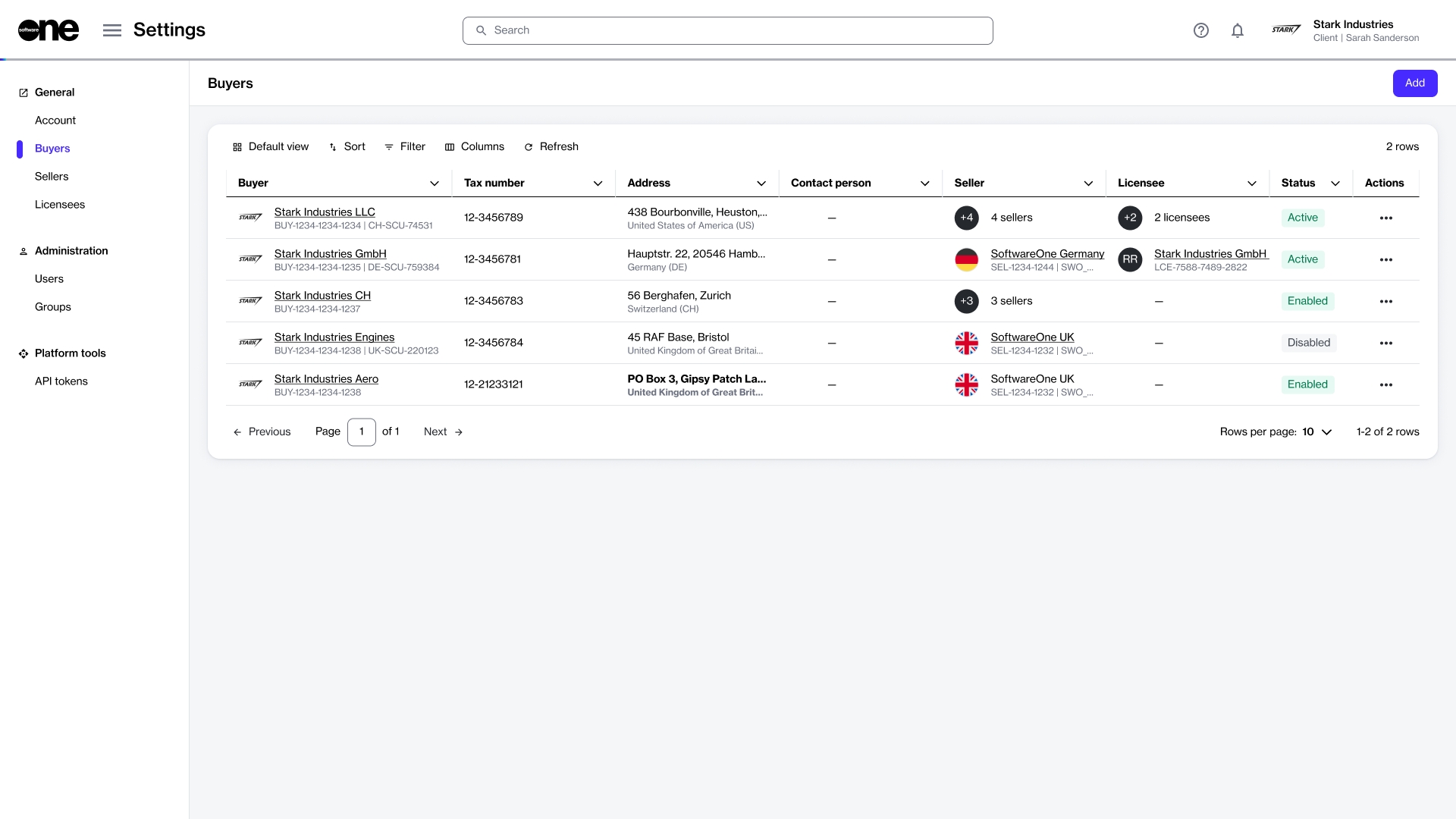
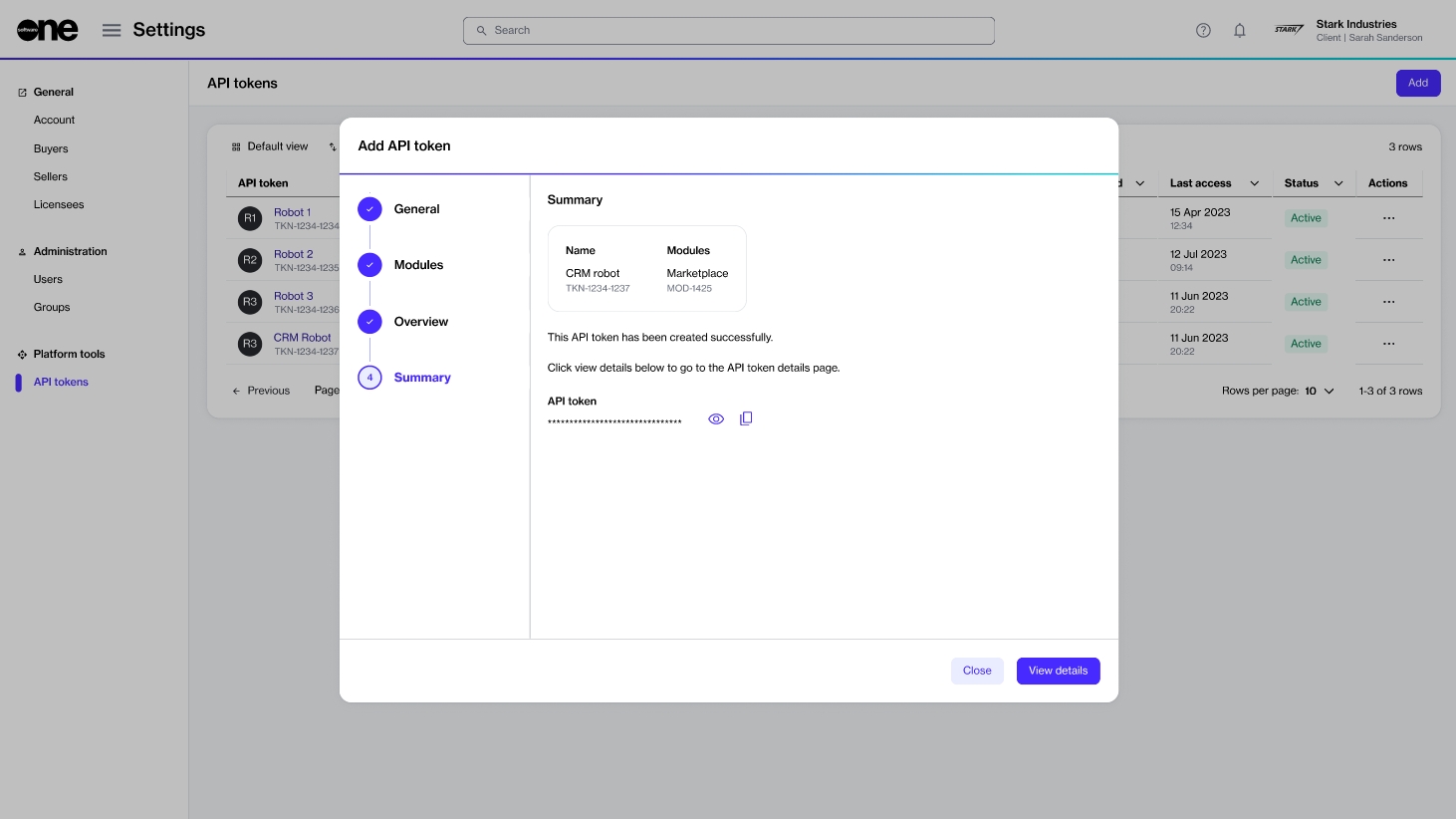
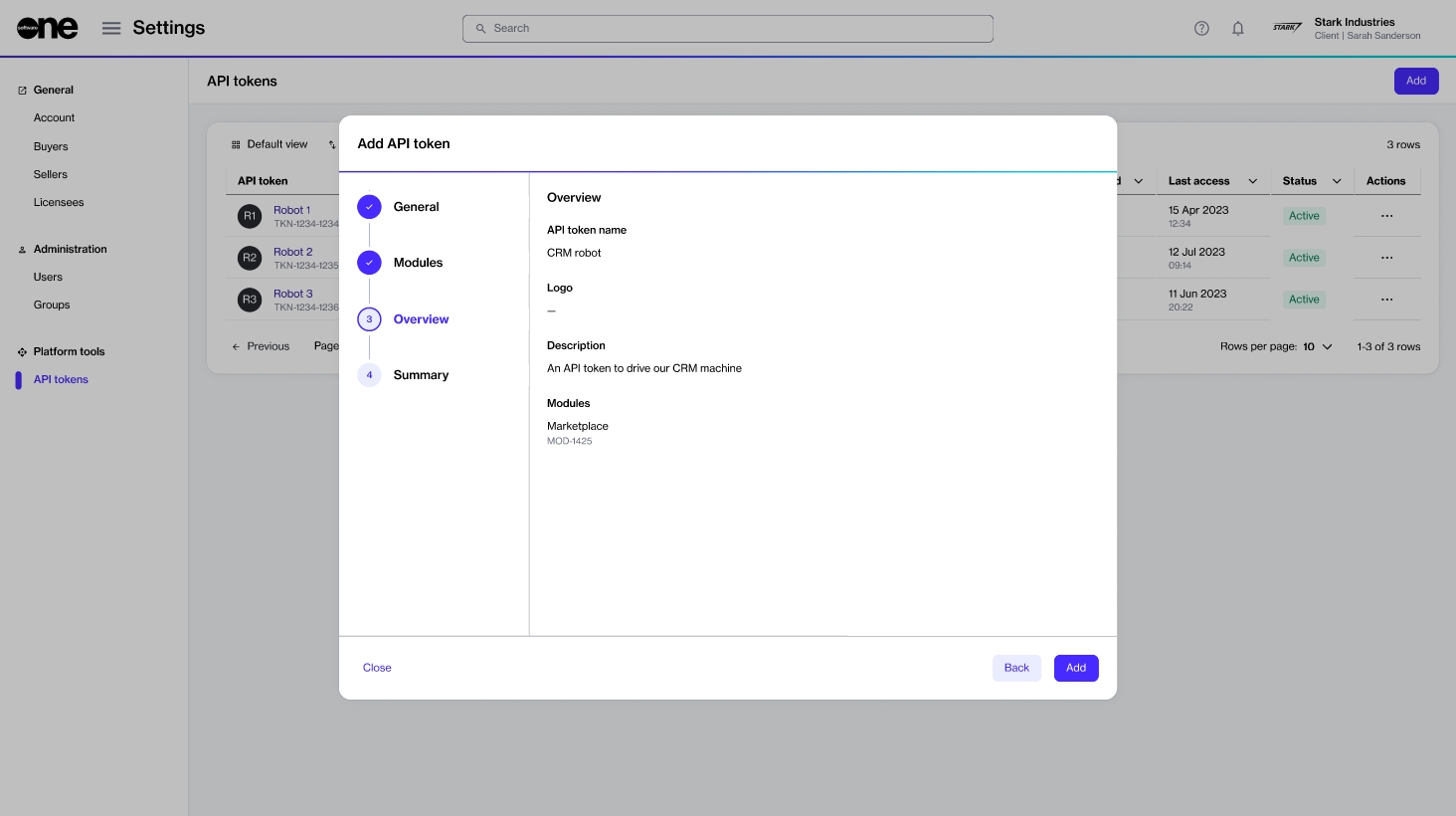
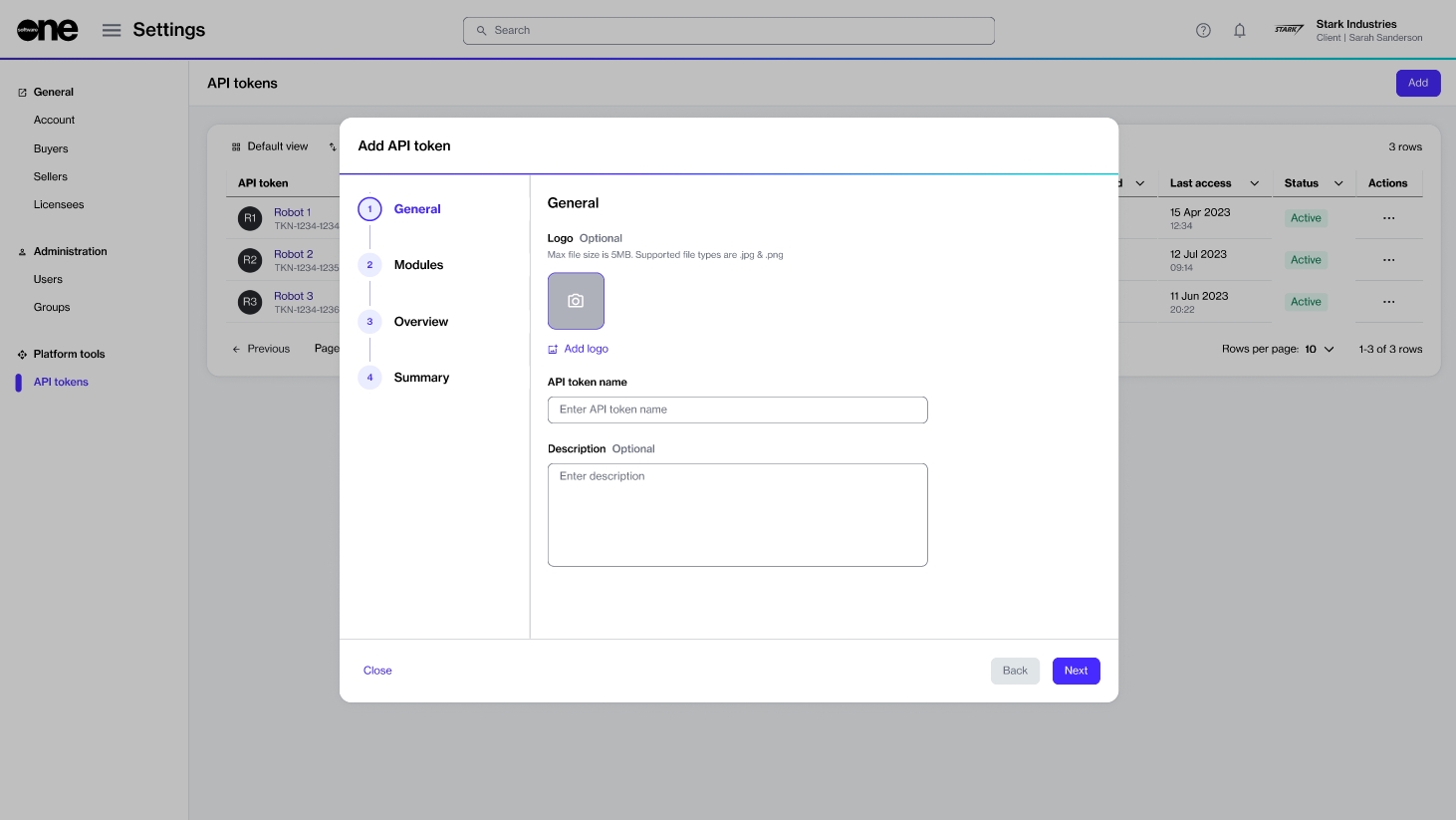
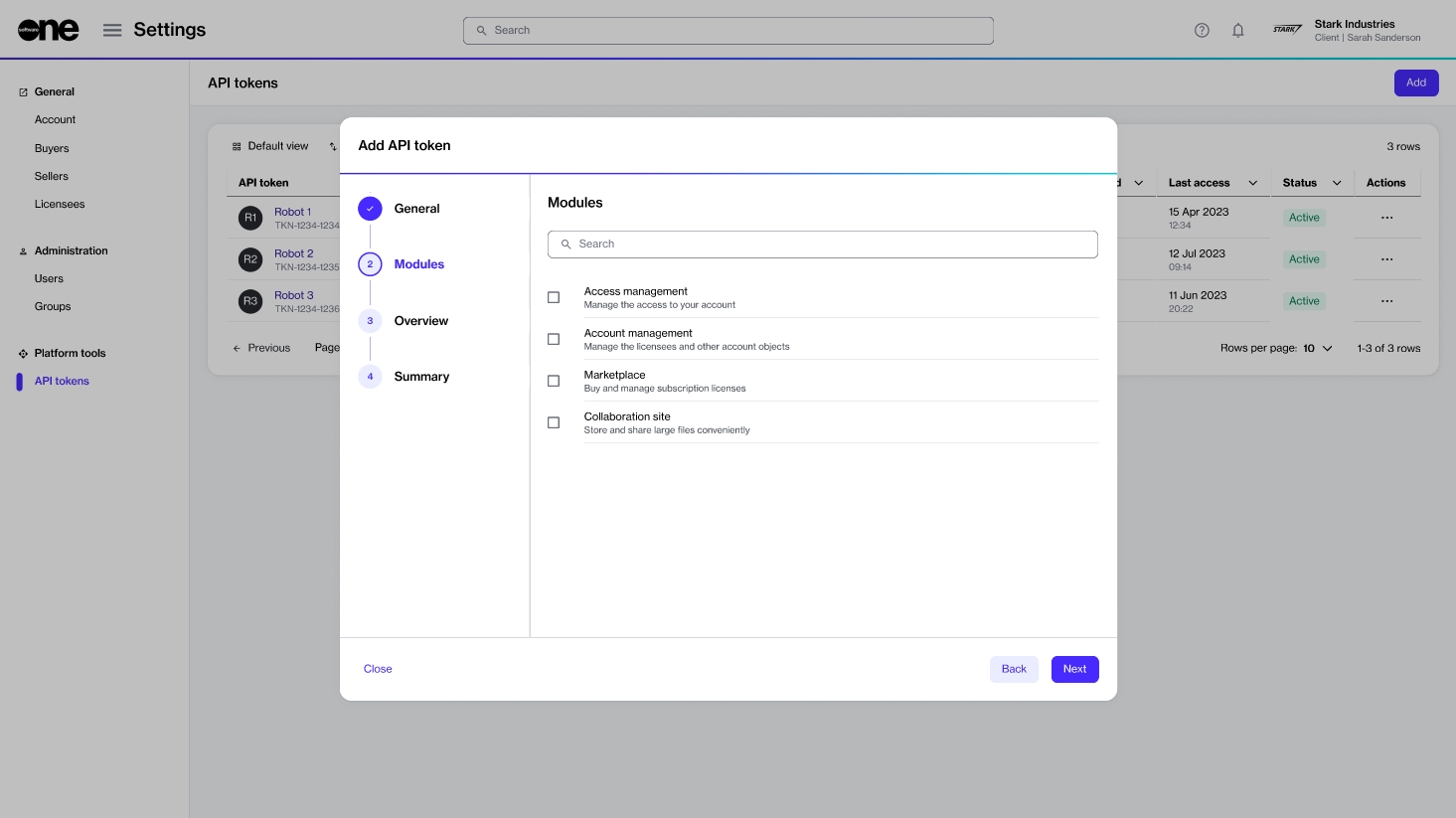
If an account invitation is not accepted within seven days of being sent, the invitation link expires. Account administrators can generate a new invitation email and send it to the individual.
Note that the option to send a new invitation is only available for users with the Invitation expired status.
Follow the steps in this topic only if the individual's original invitation has expired and they see the following message upon clicking the invitation link:
If the original invitation link is still valid, you can either resend the original invitation email or copy the invitation link from the interface and share it with the person directly. For more information, see Resend Invitation and Copy Invitation Link.
Follow these steps to send a new invitation email:
On the Users page (Settings > Users), find the required individual. Make sure that their status is Invitation expired.
Click the actions icon (•••) and select Send new invitation.
A new invitation email is sent to the individual instantly and a confirmation message is displayed.
